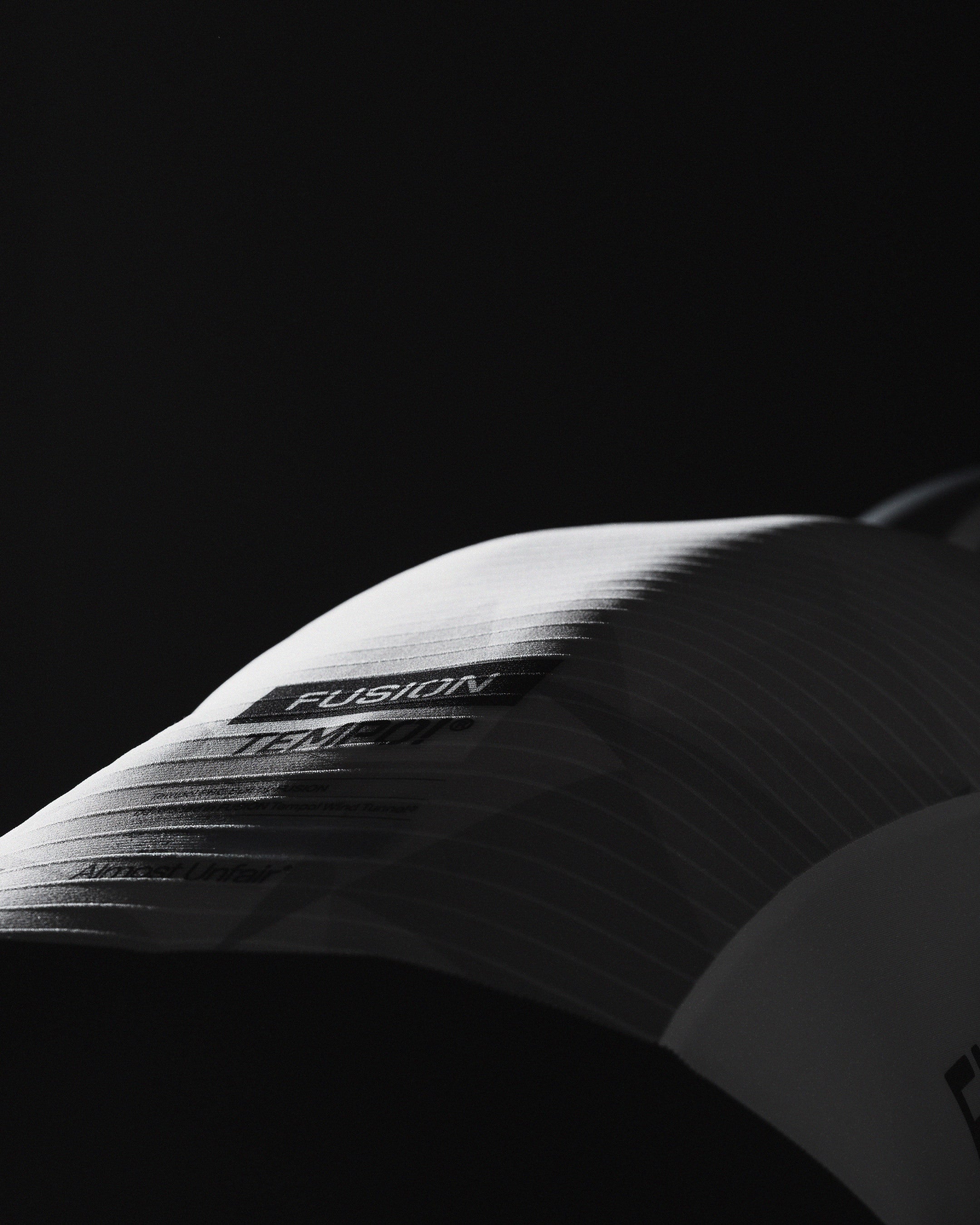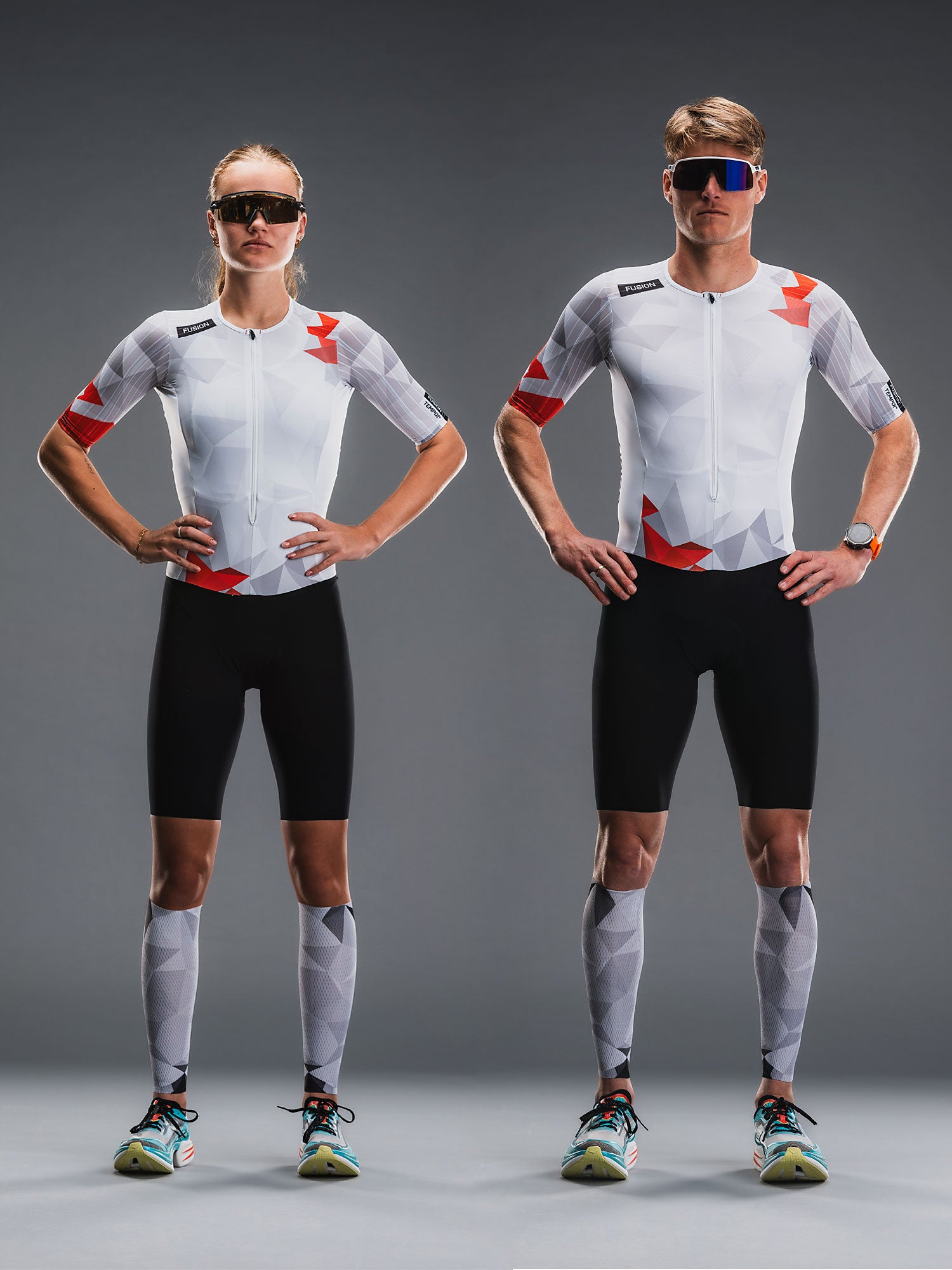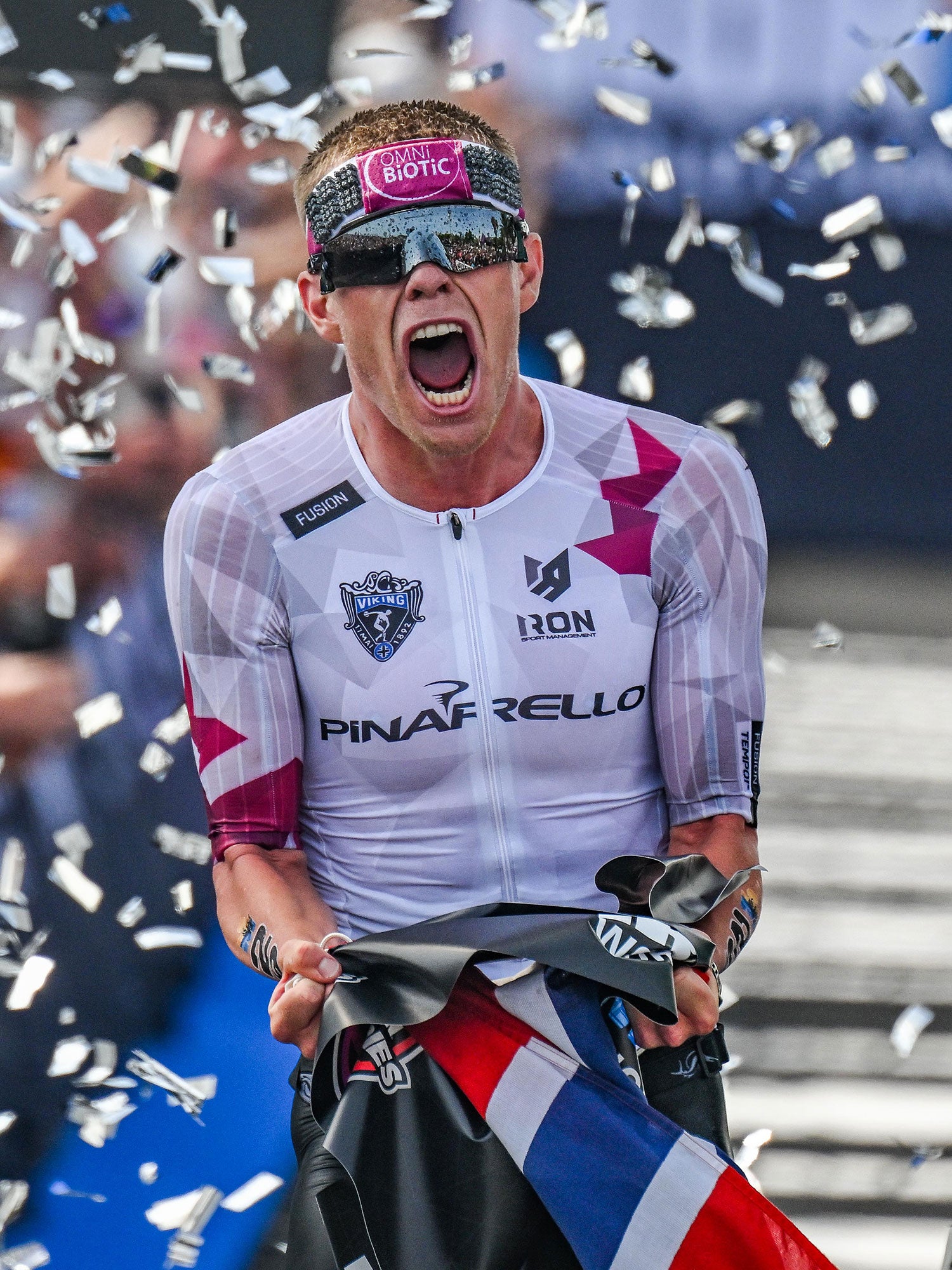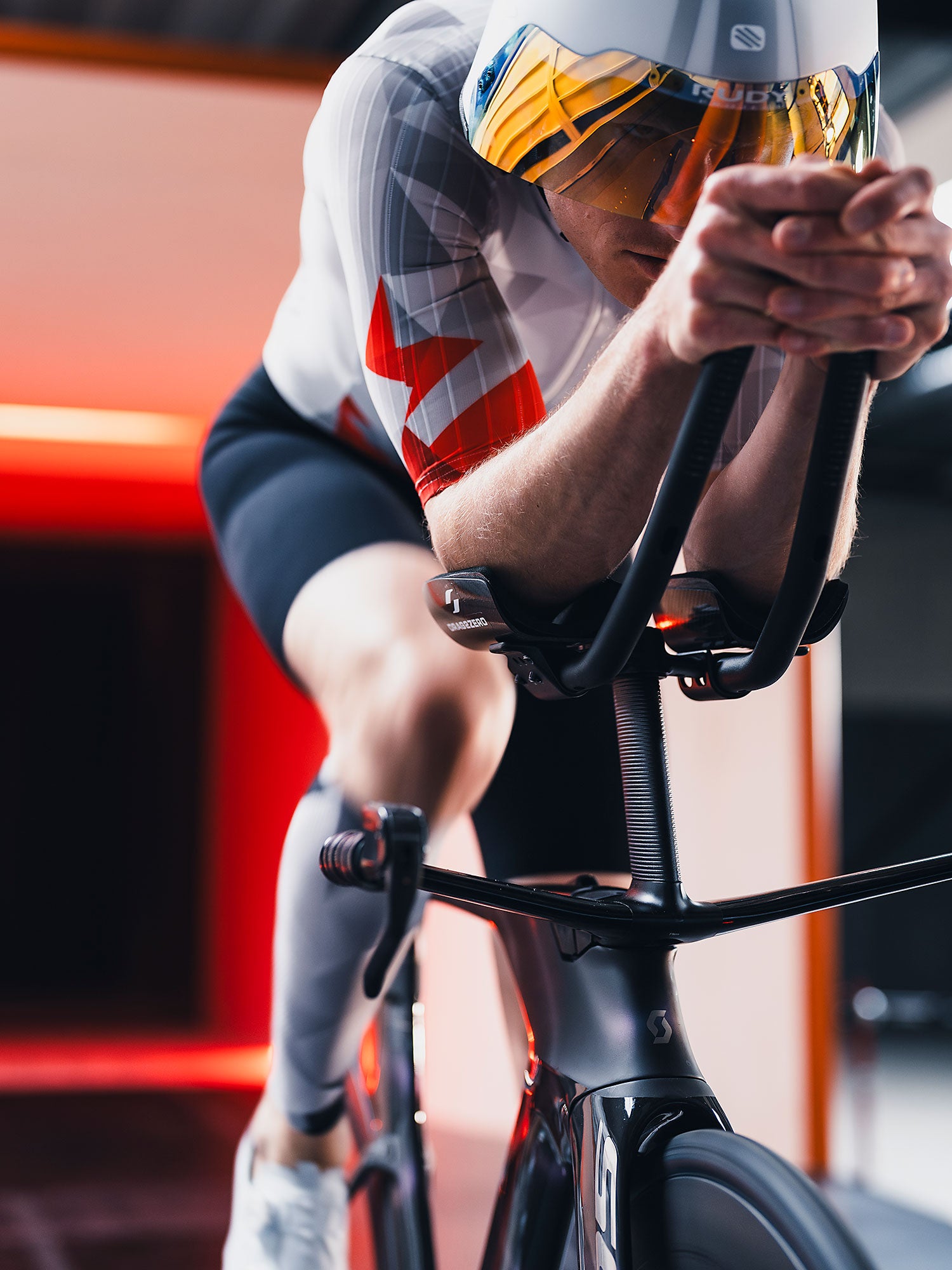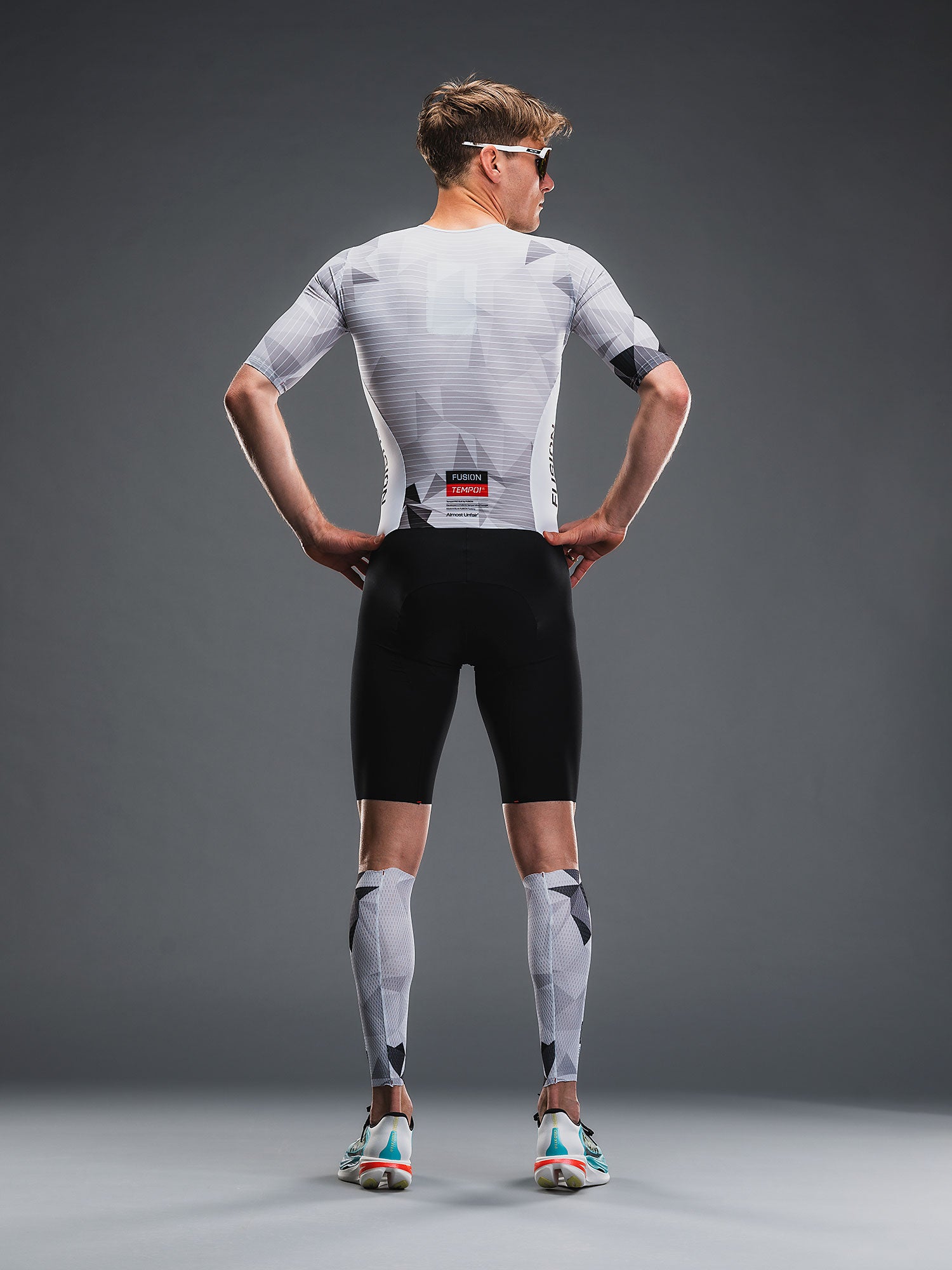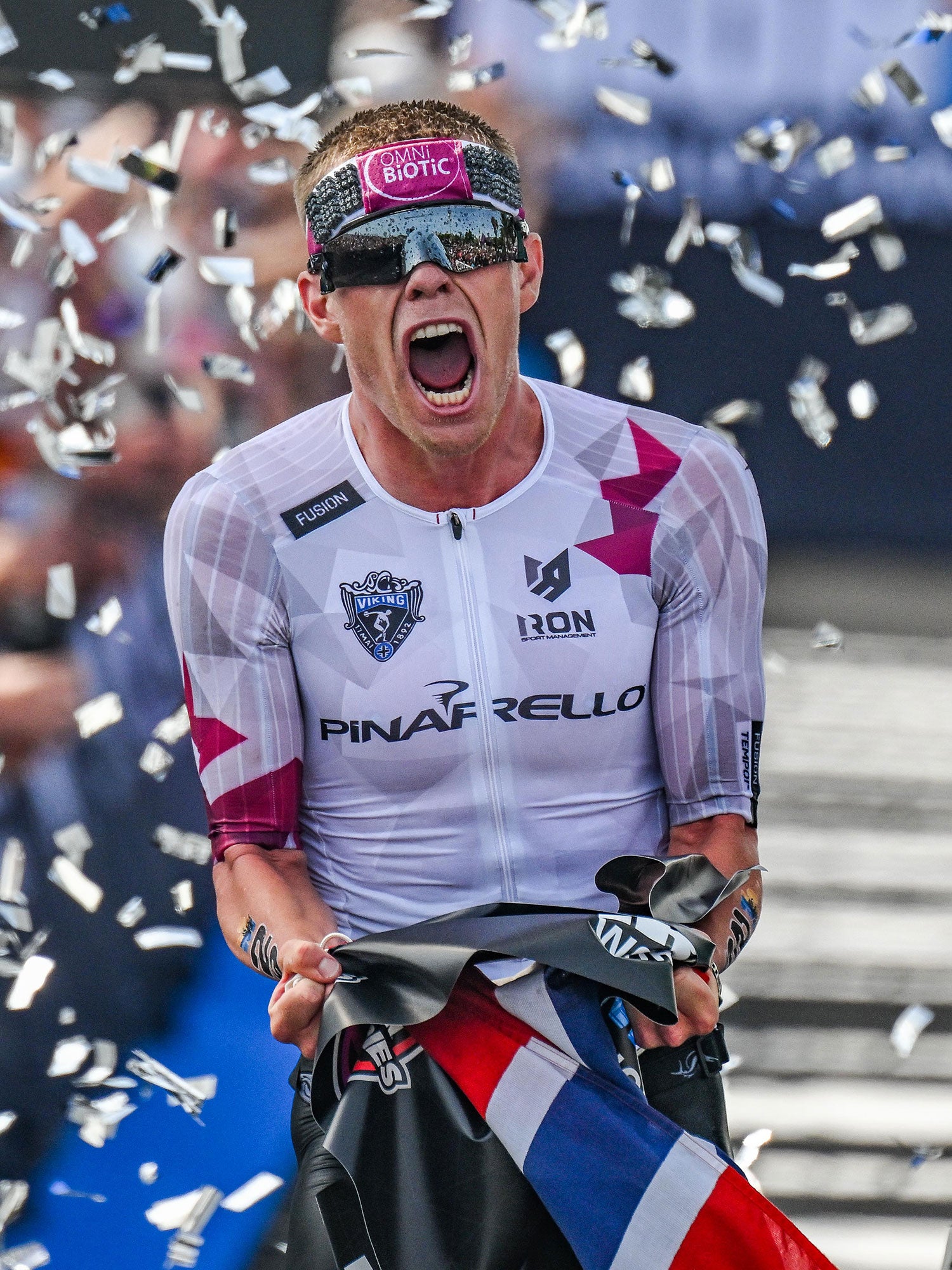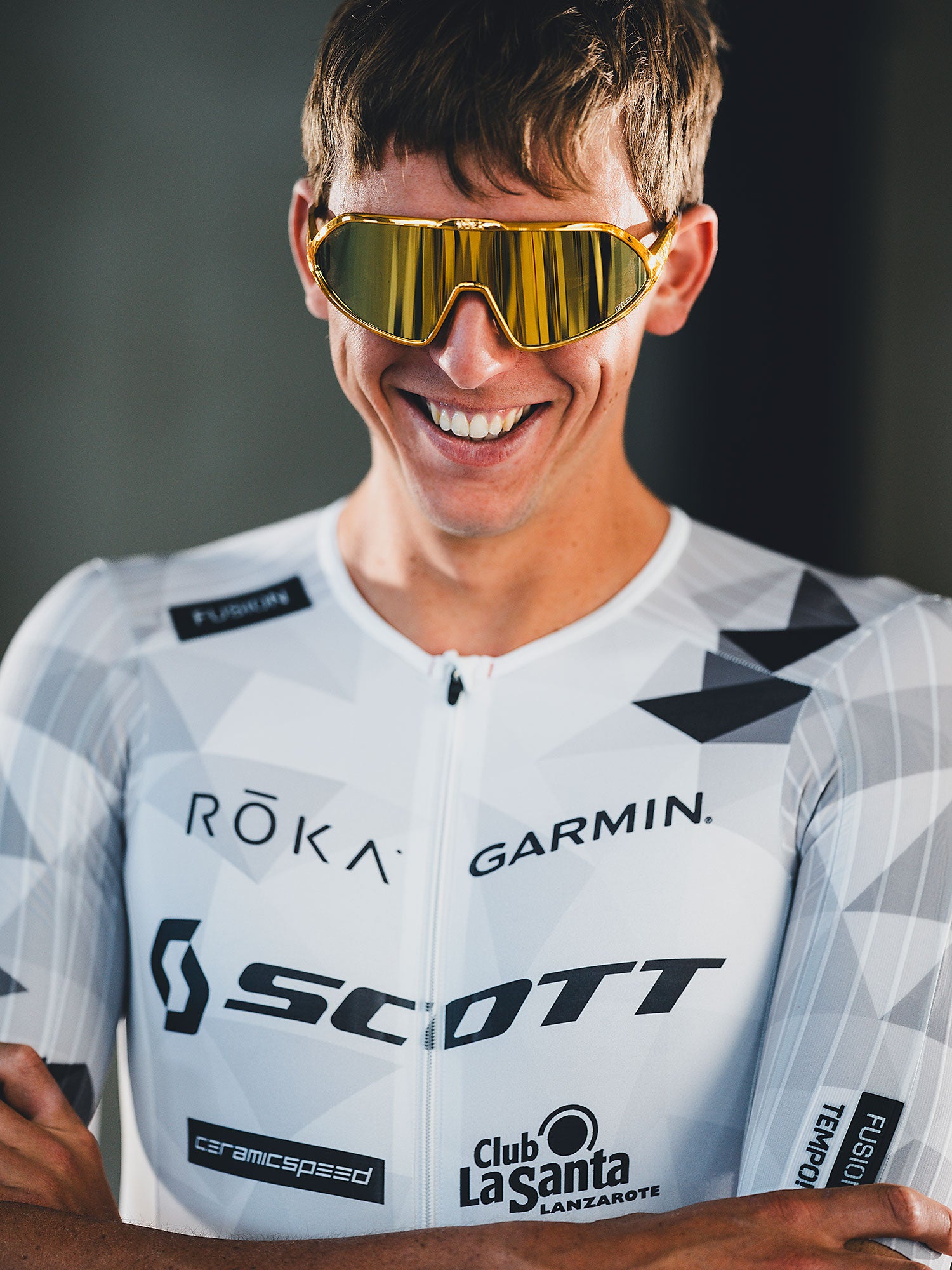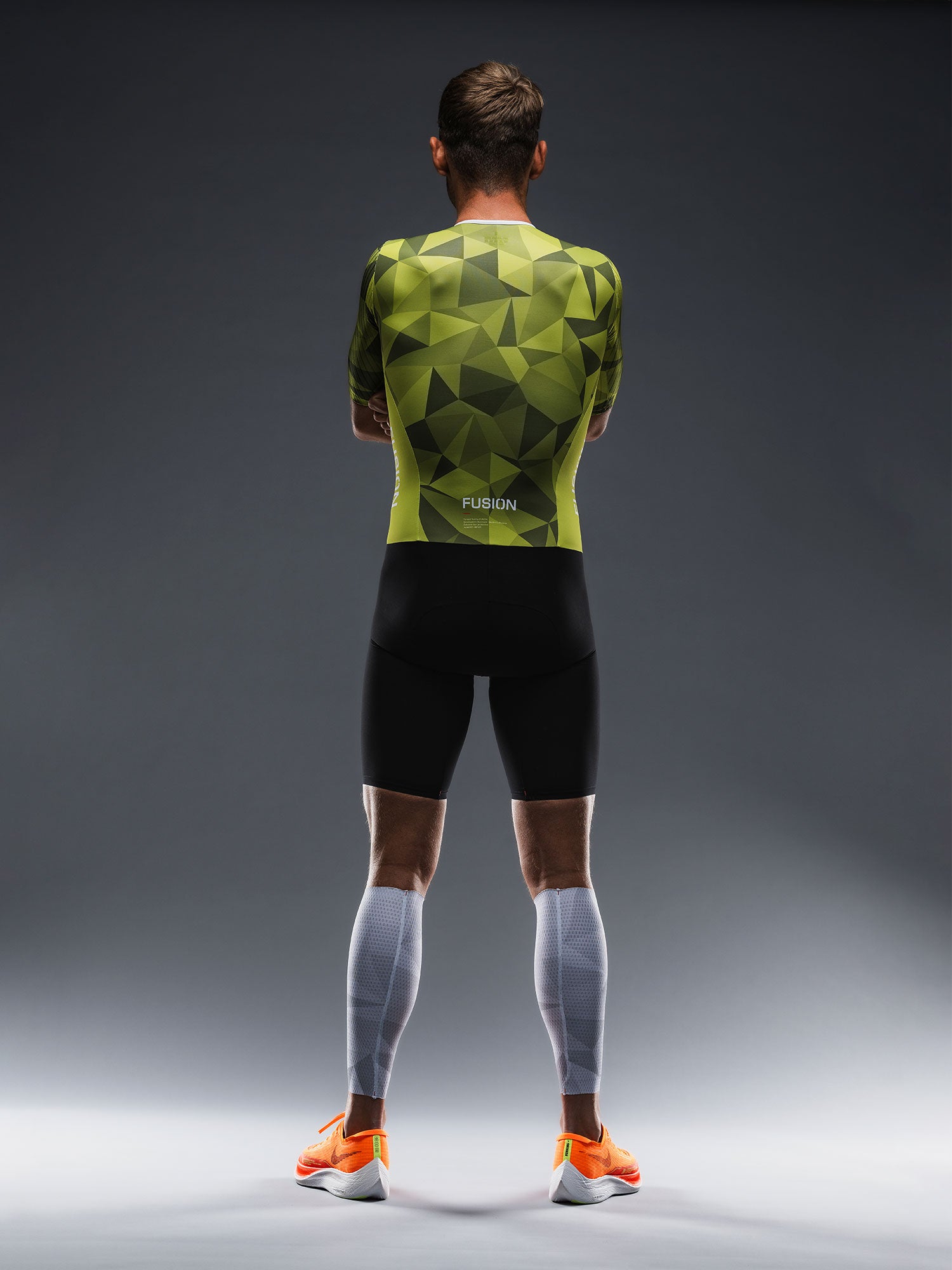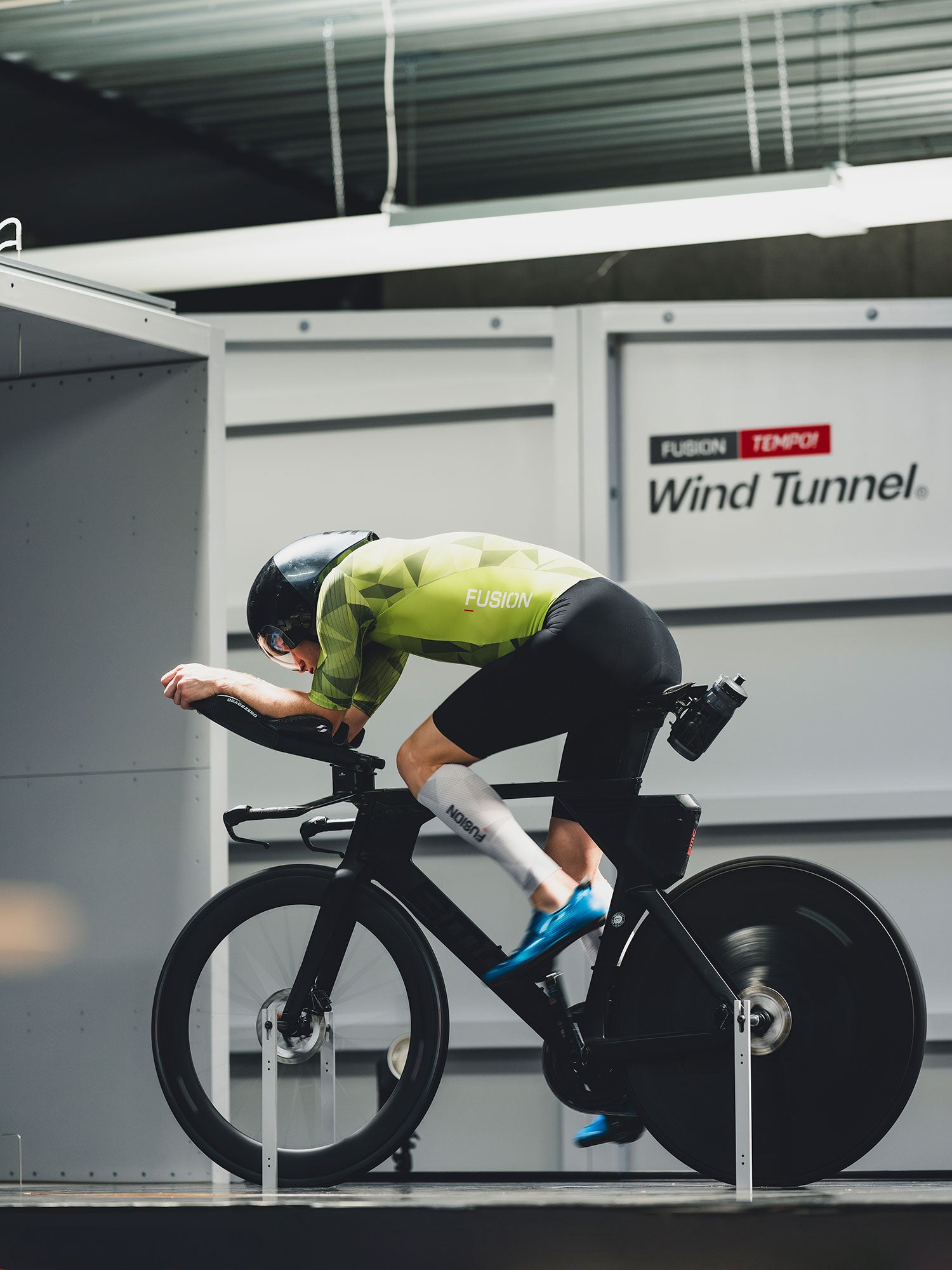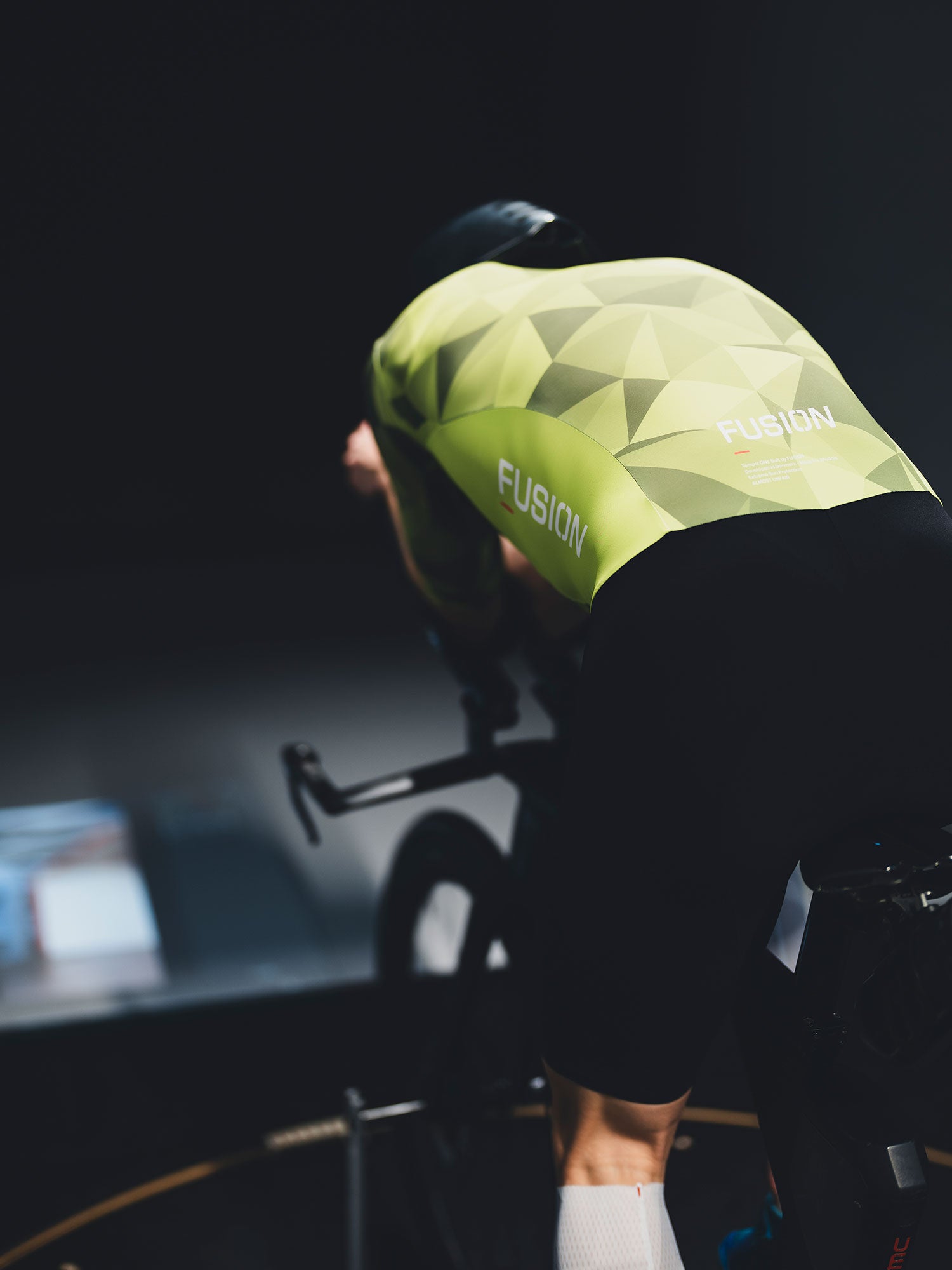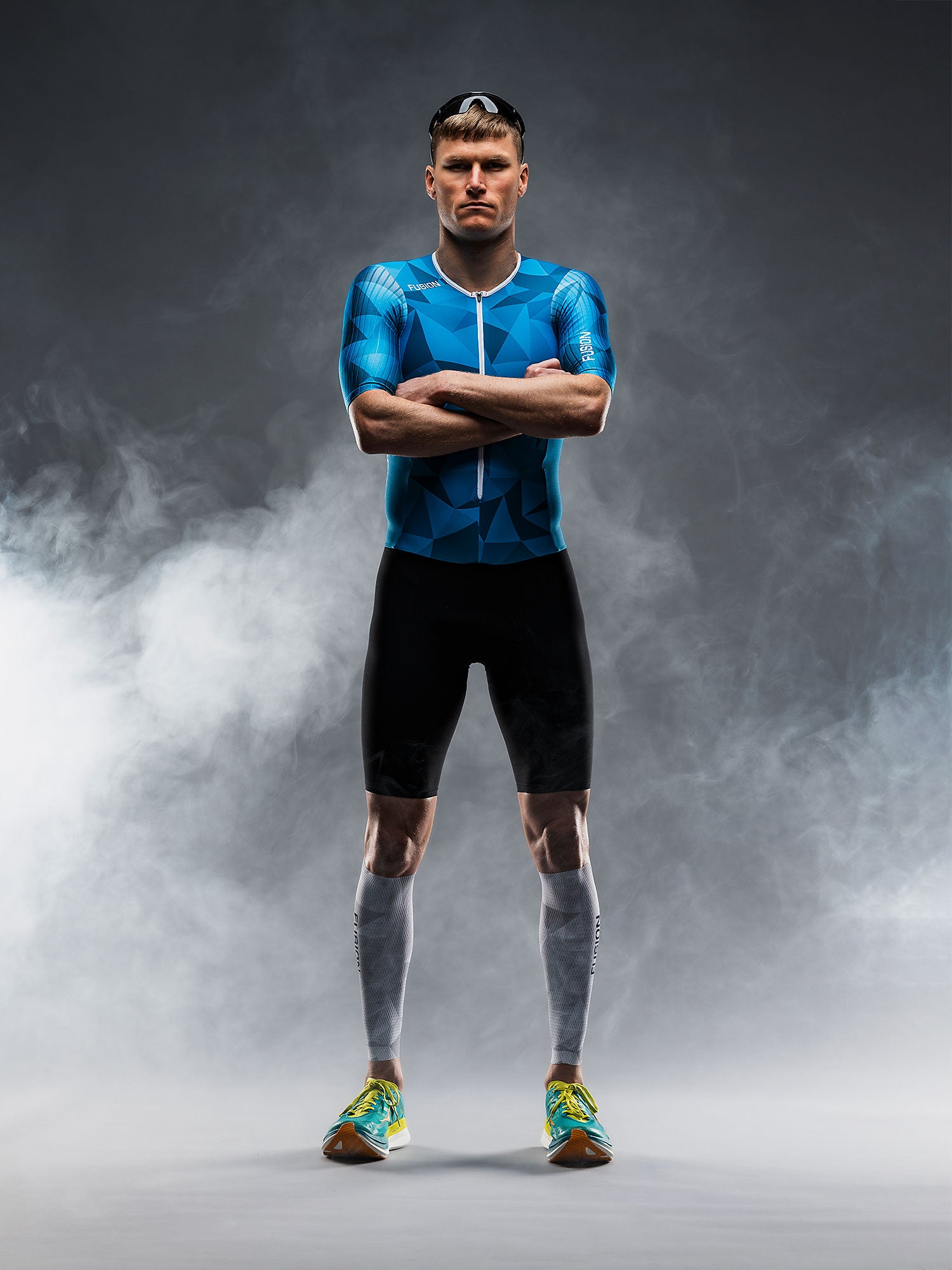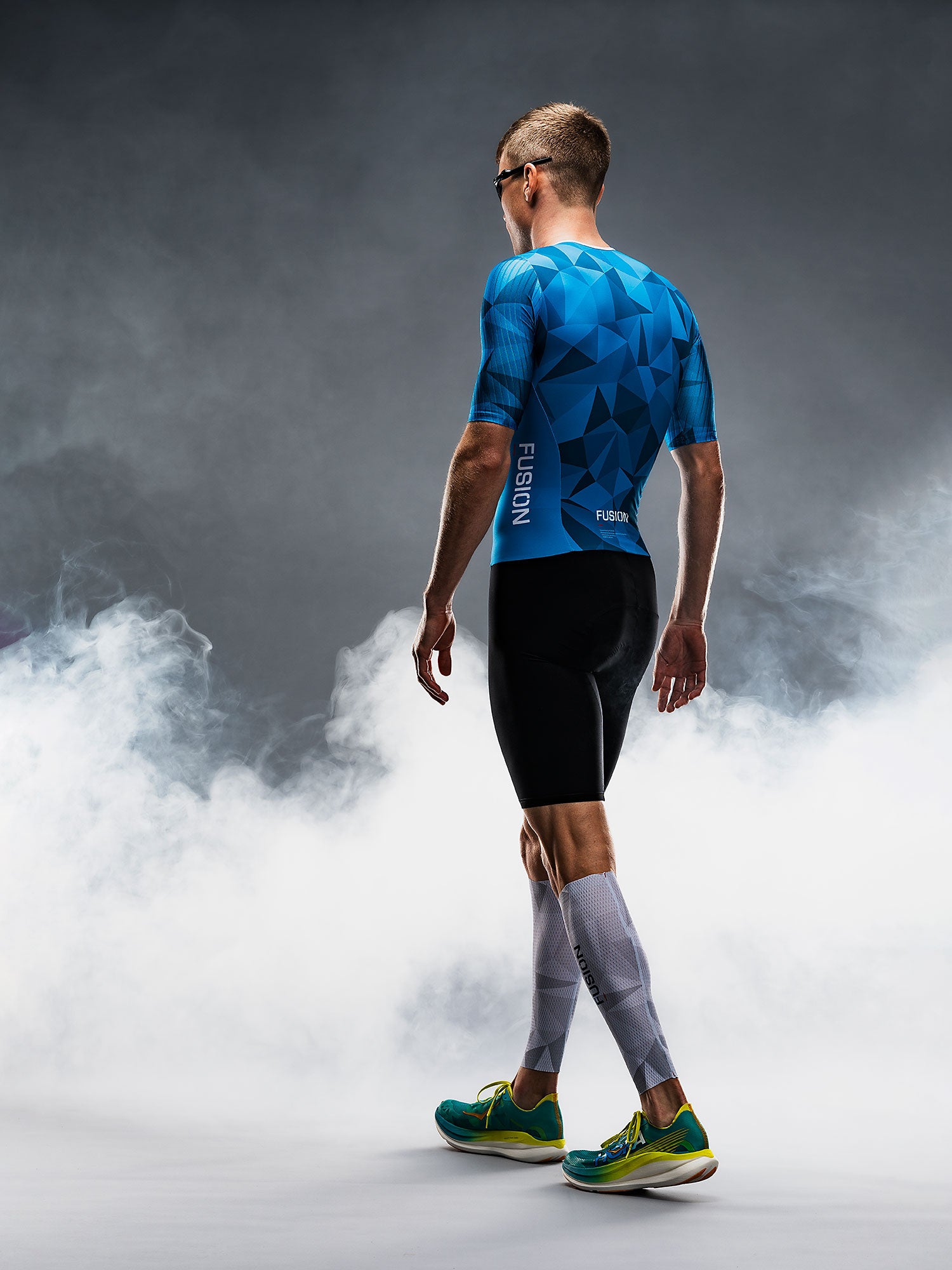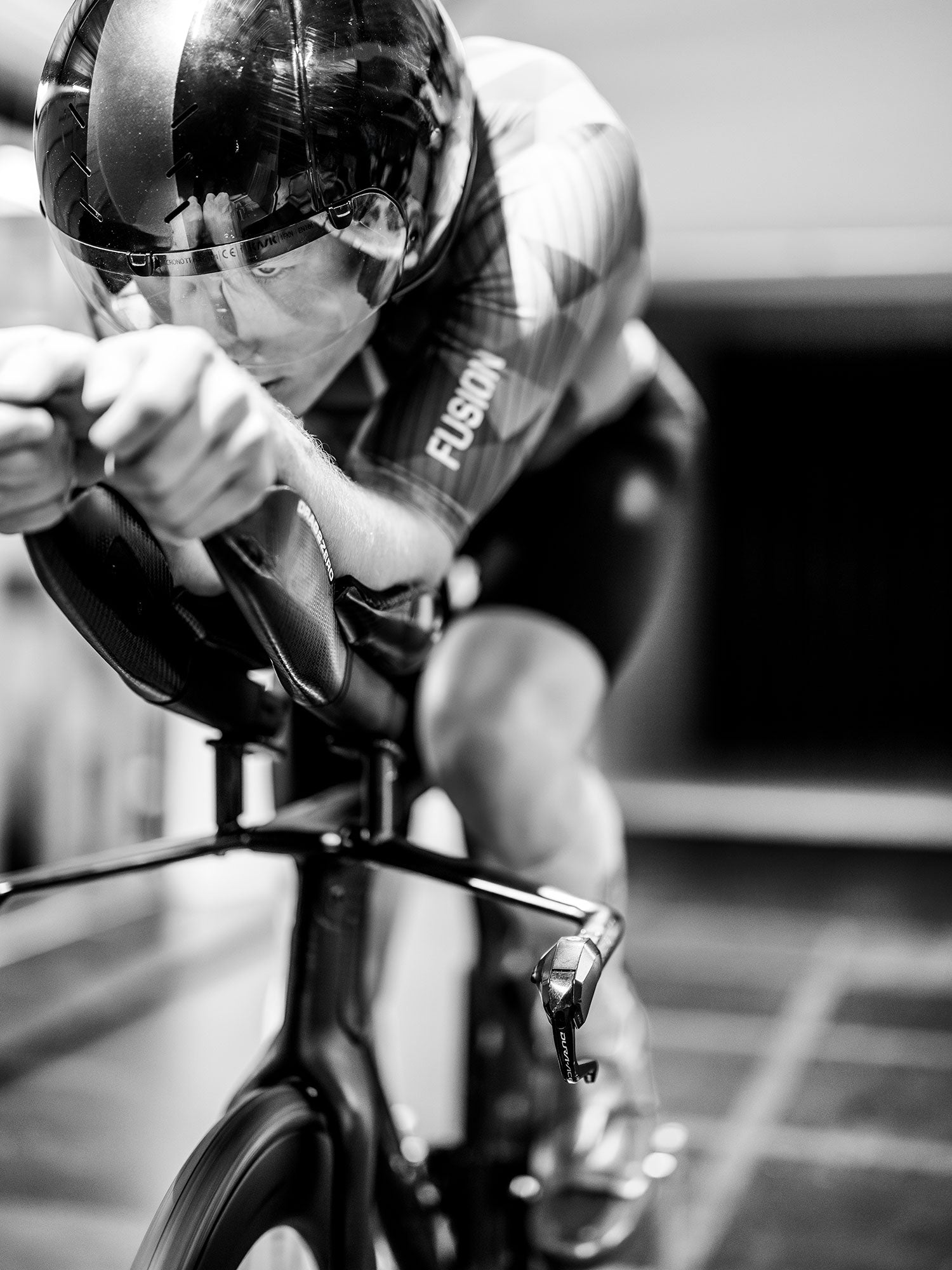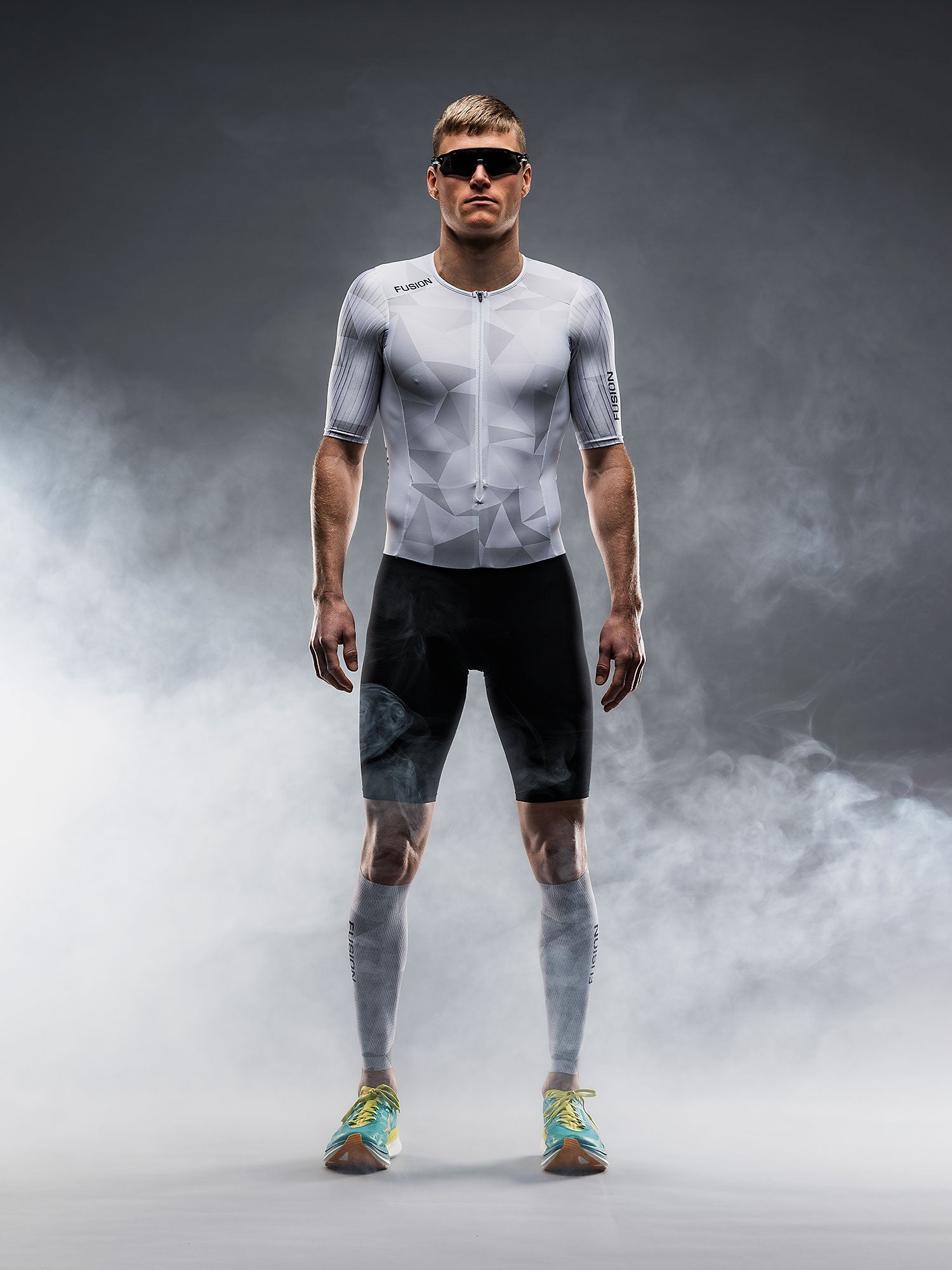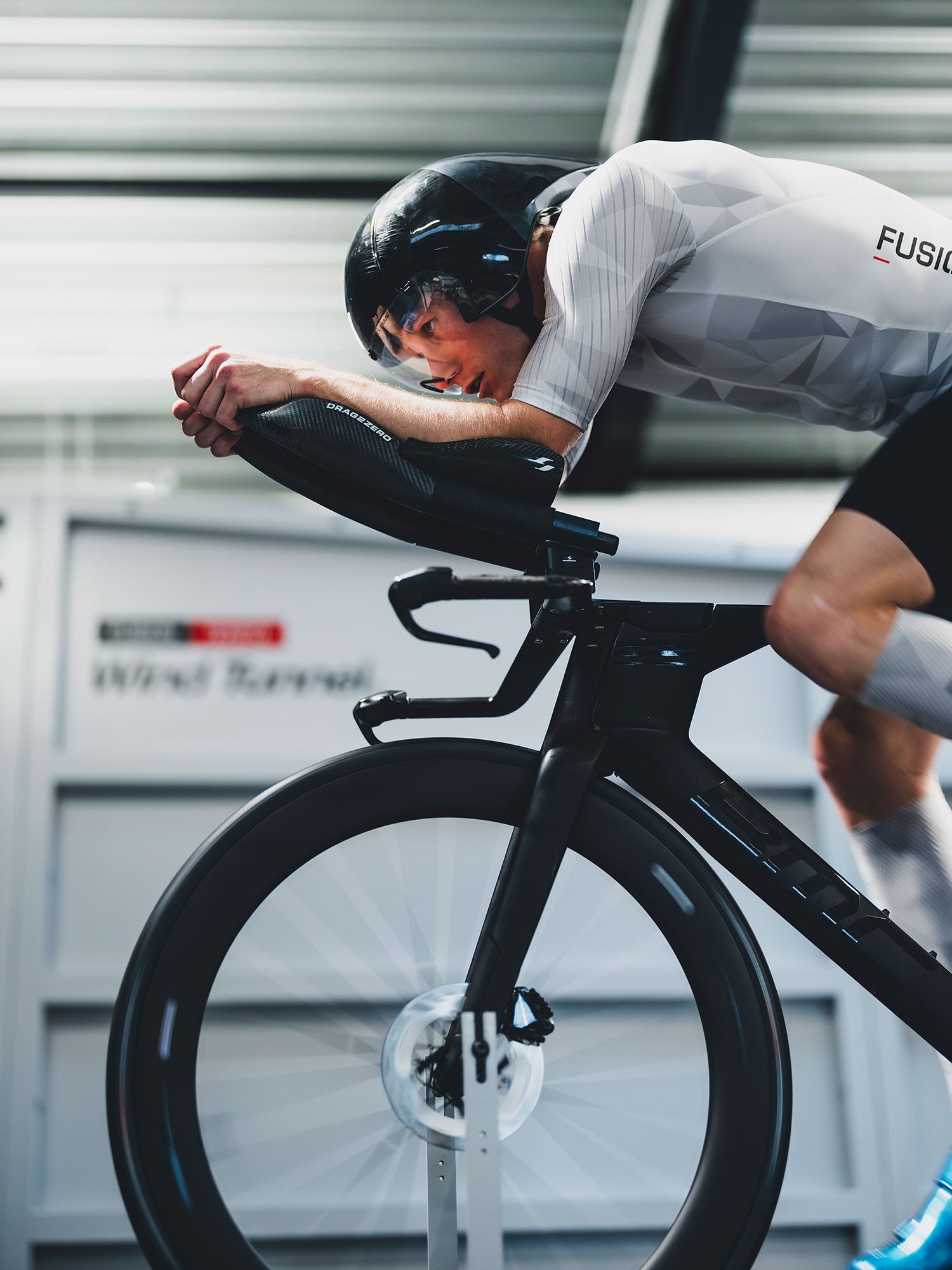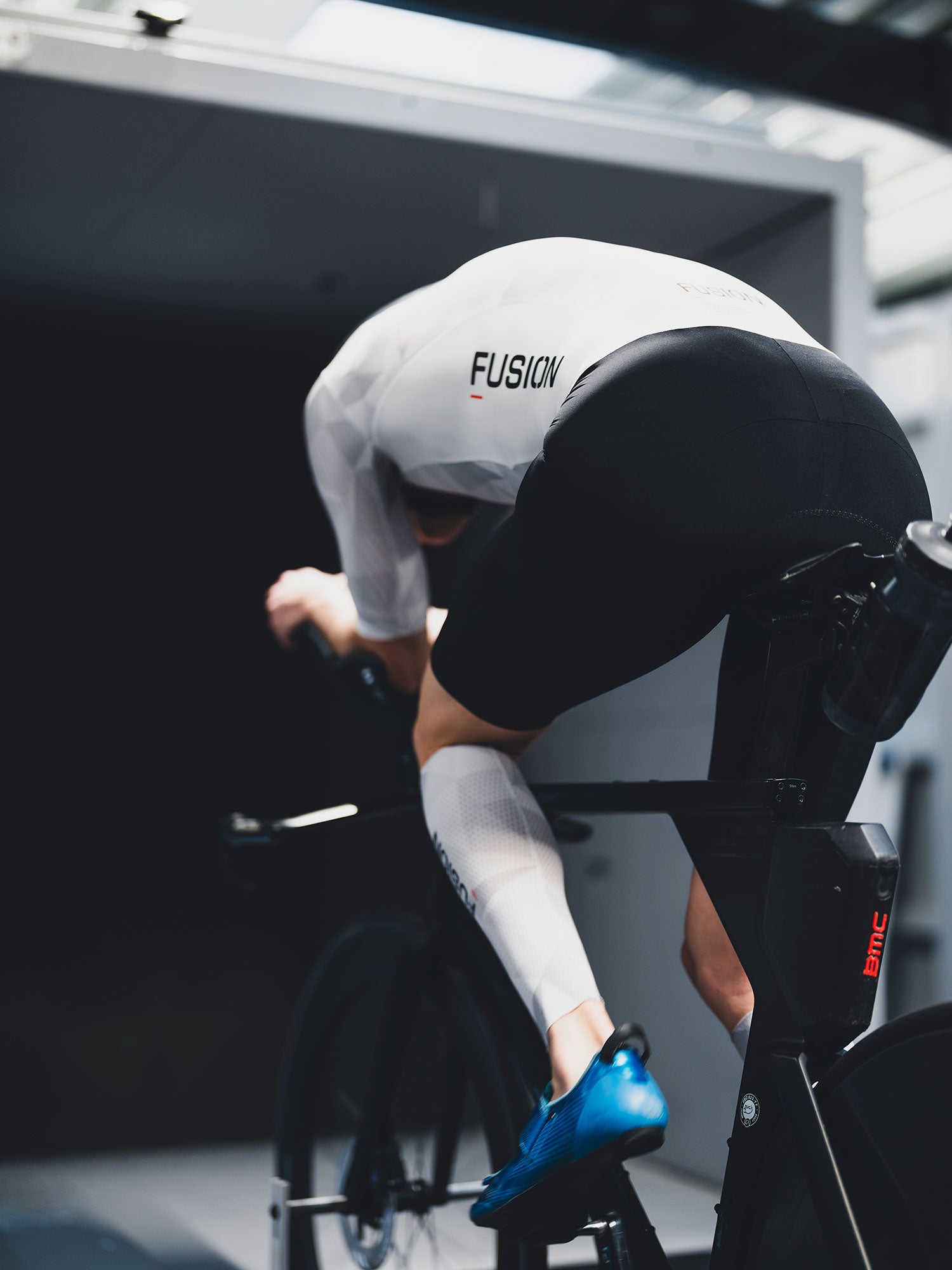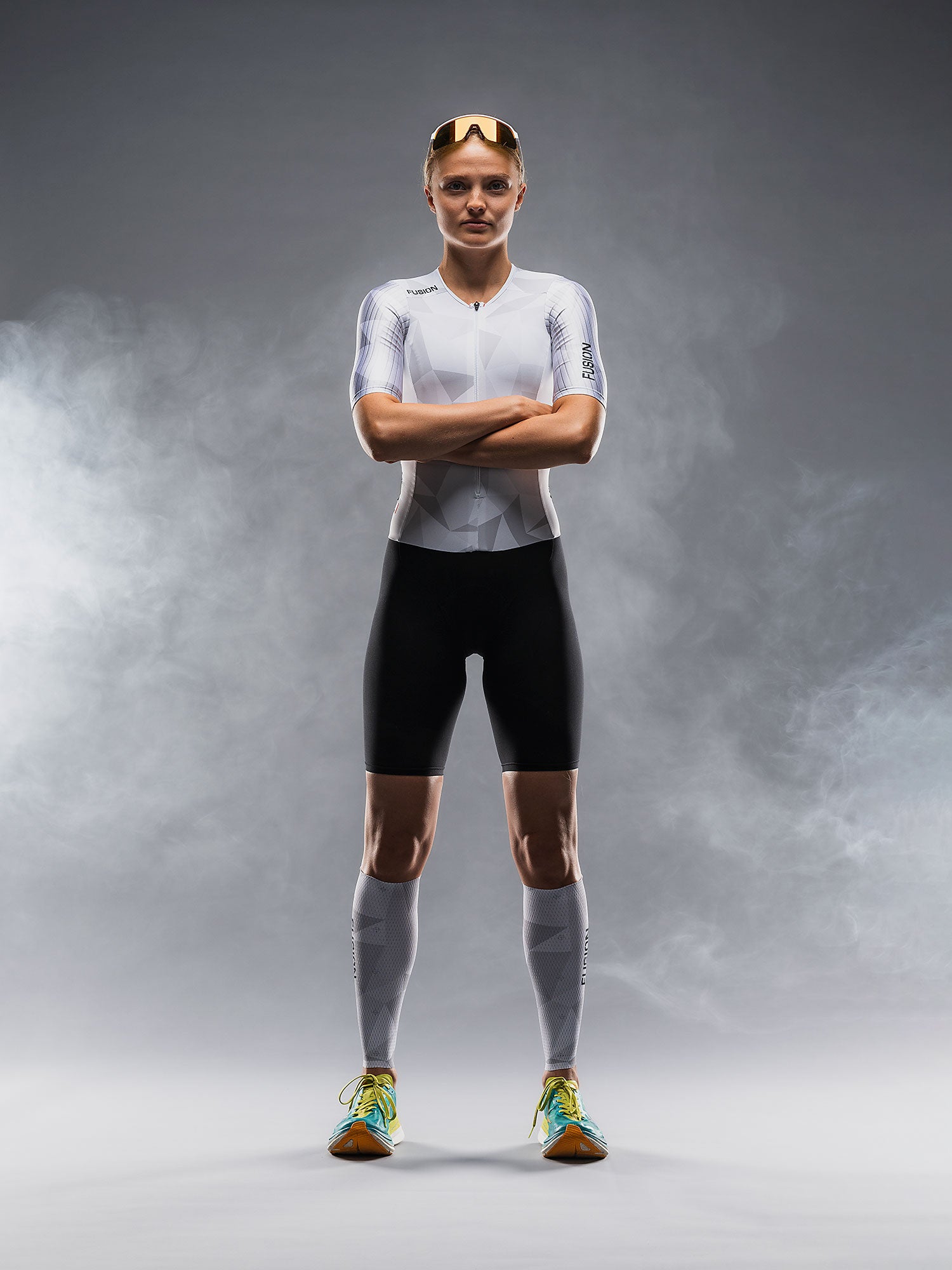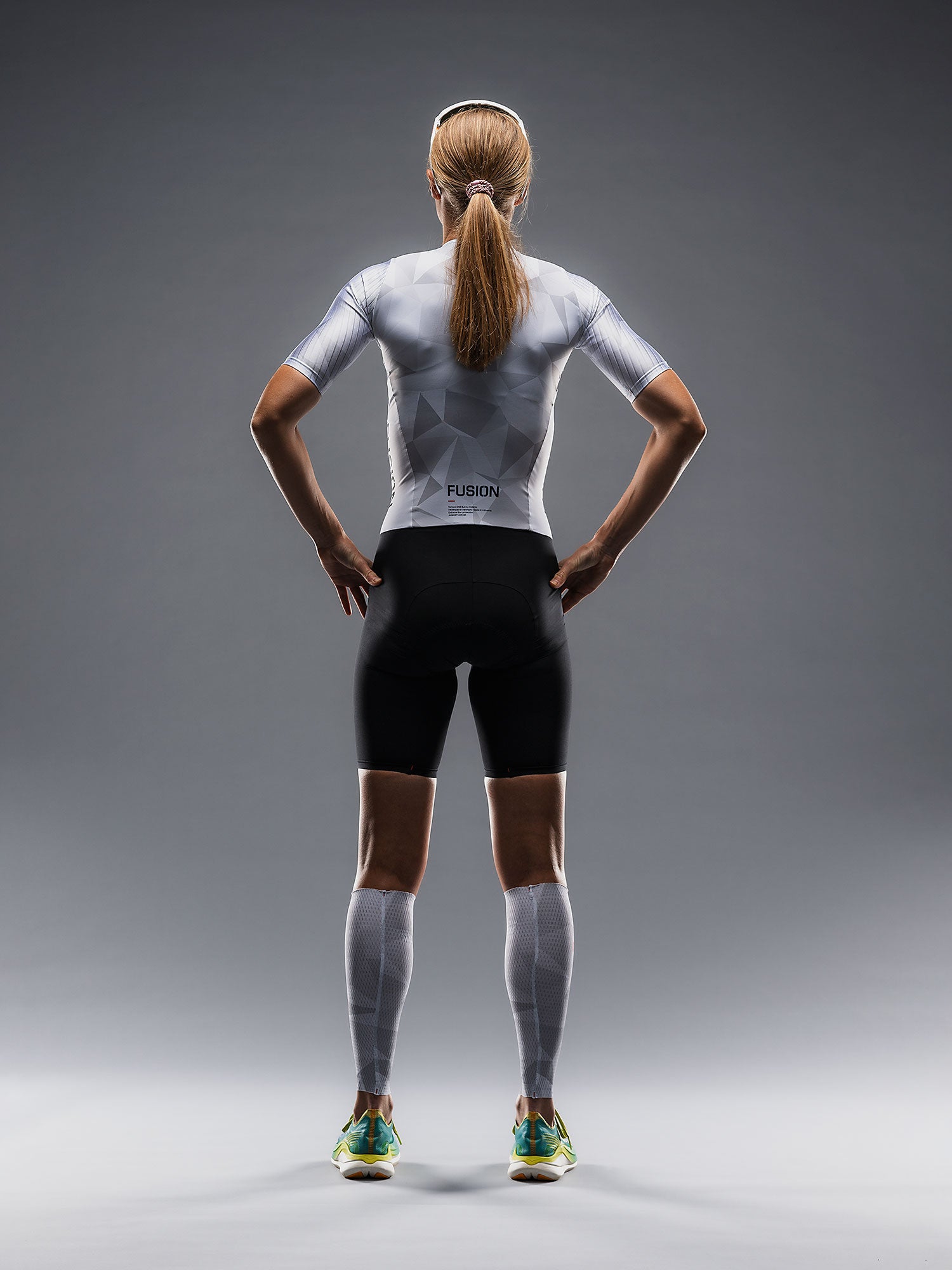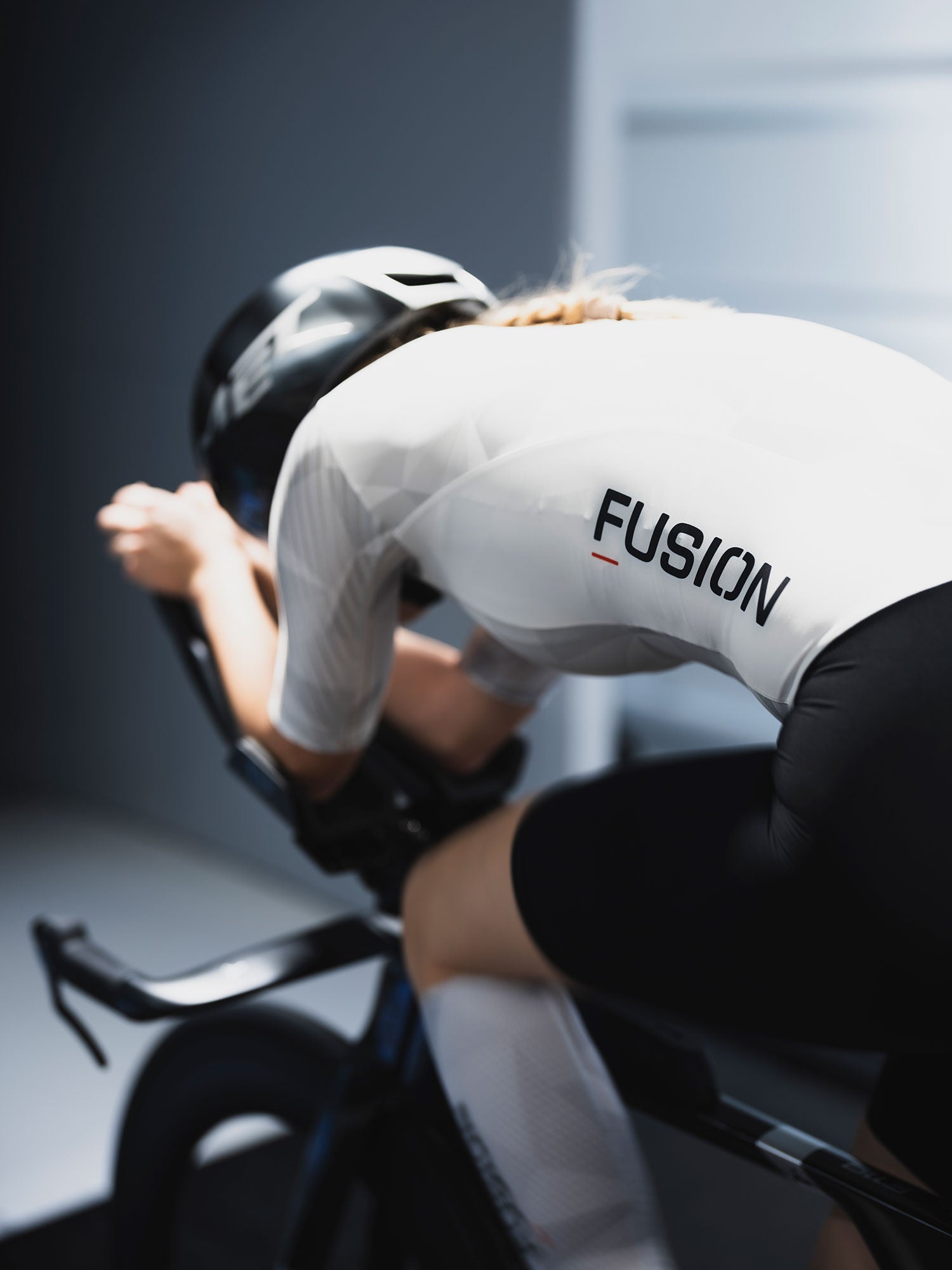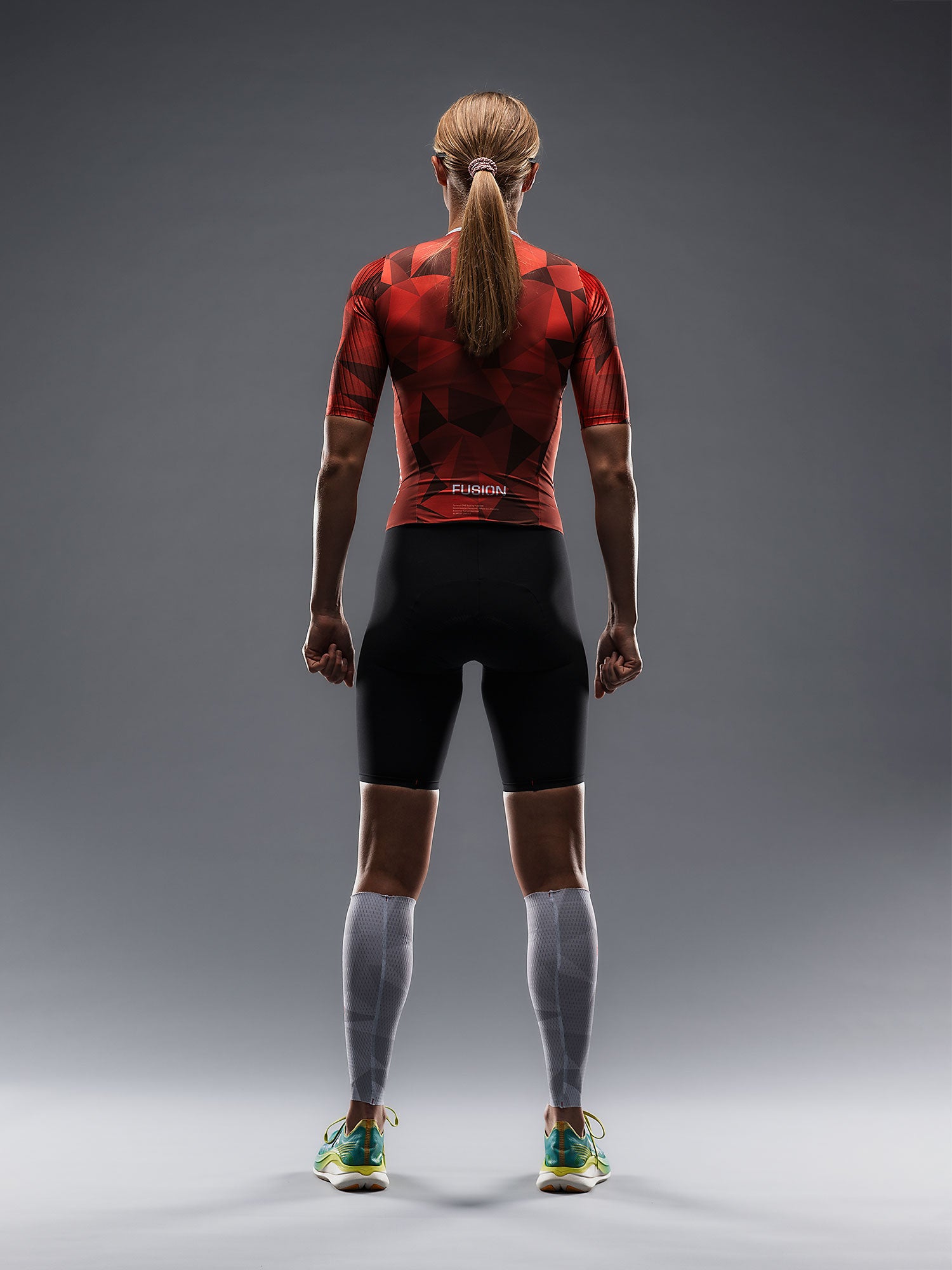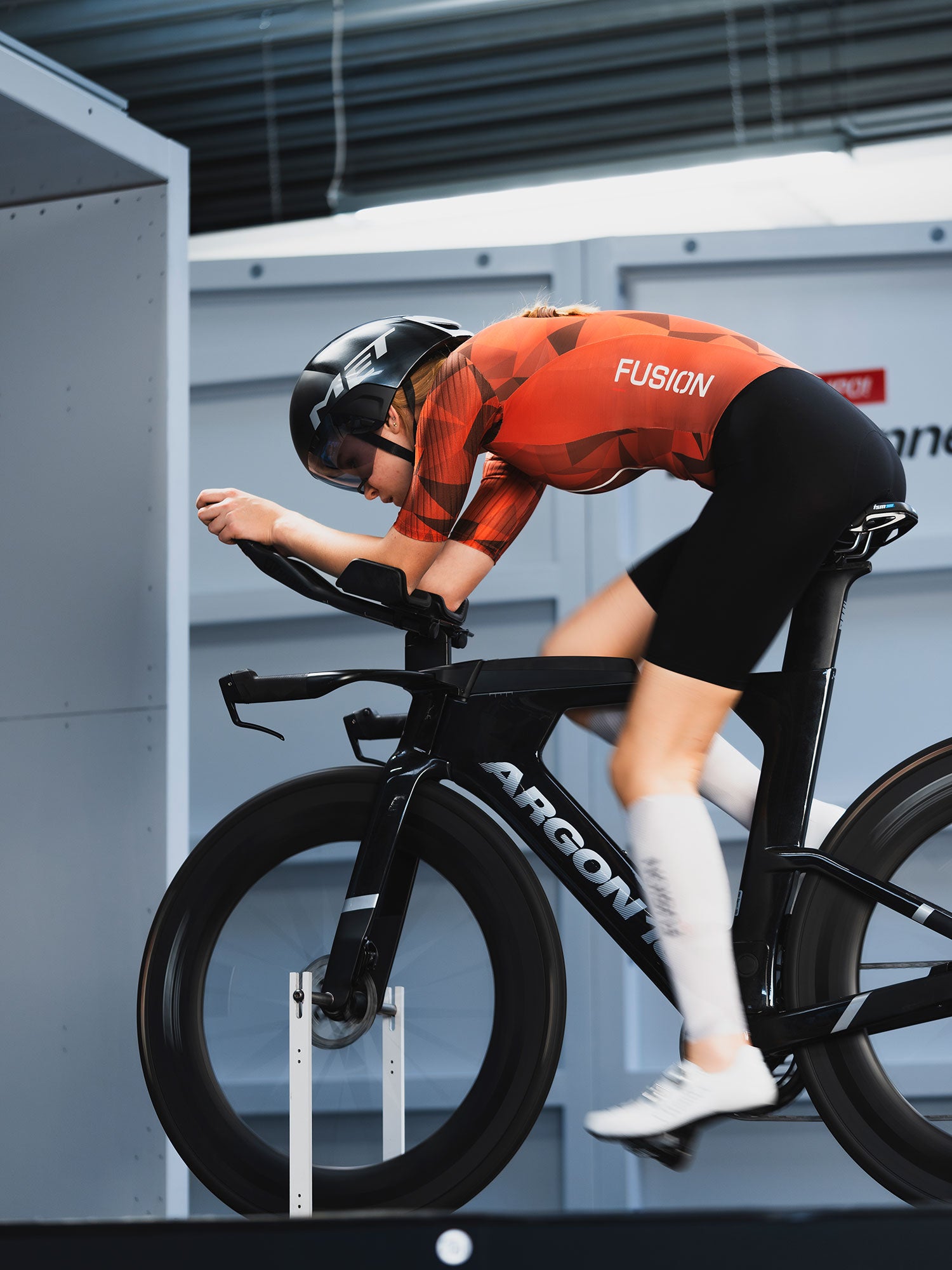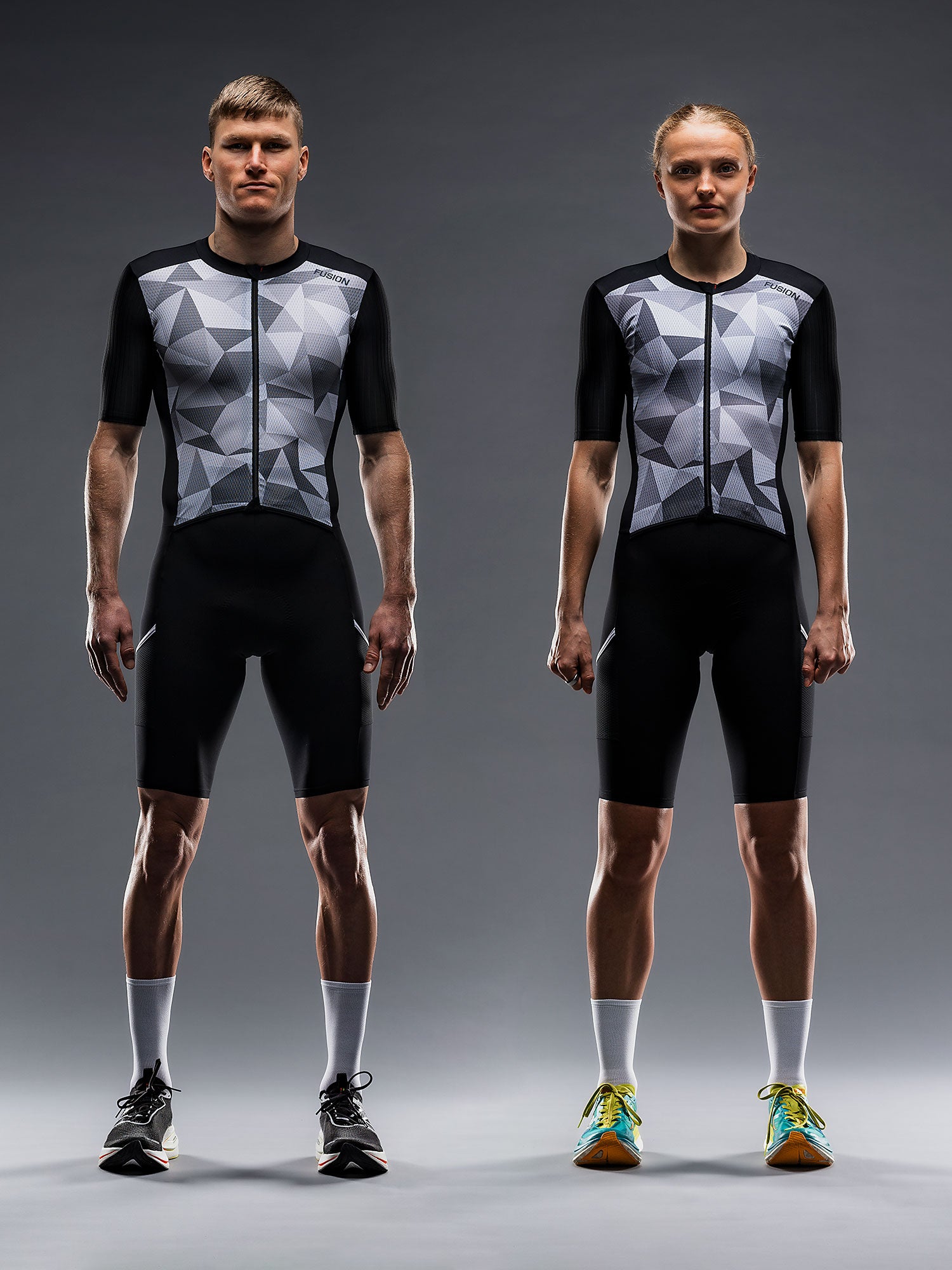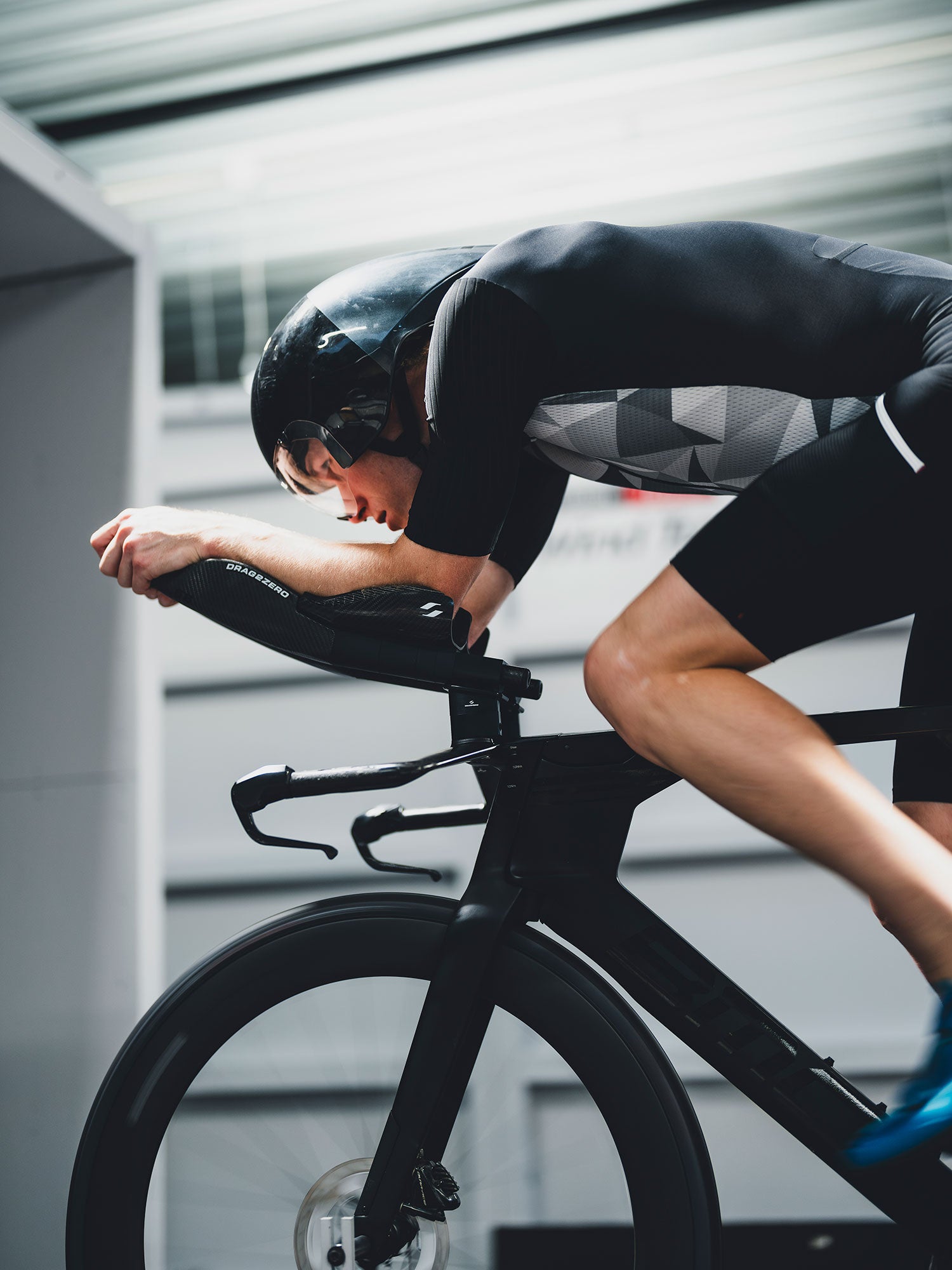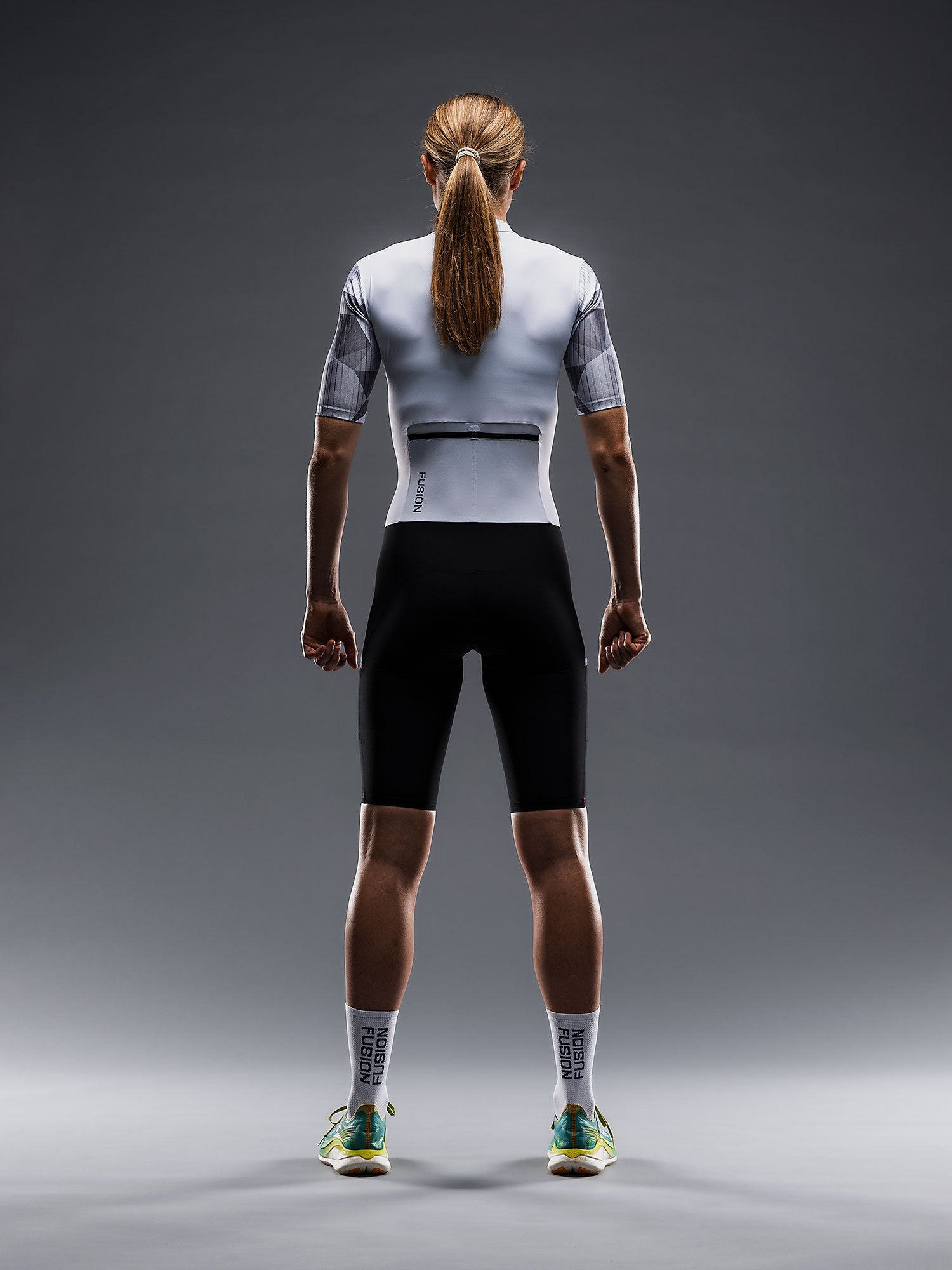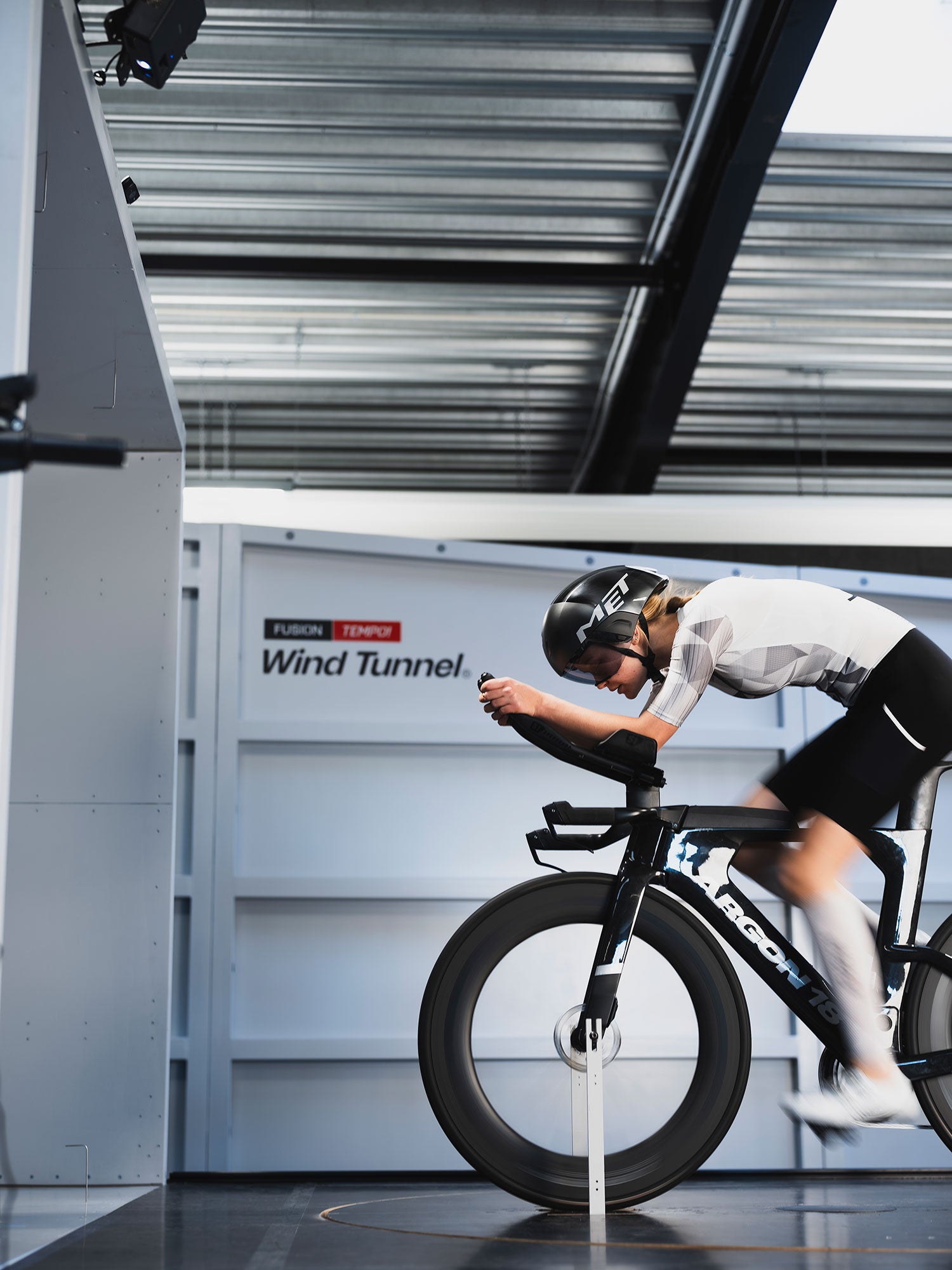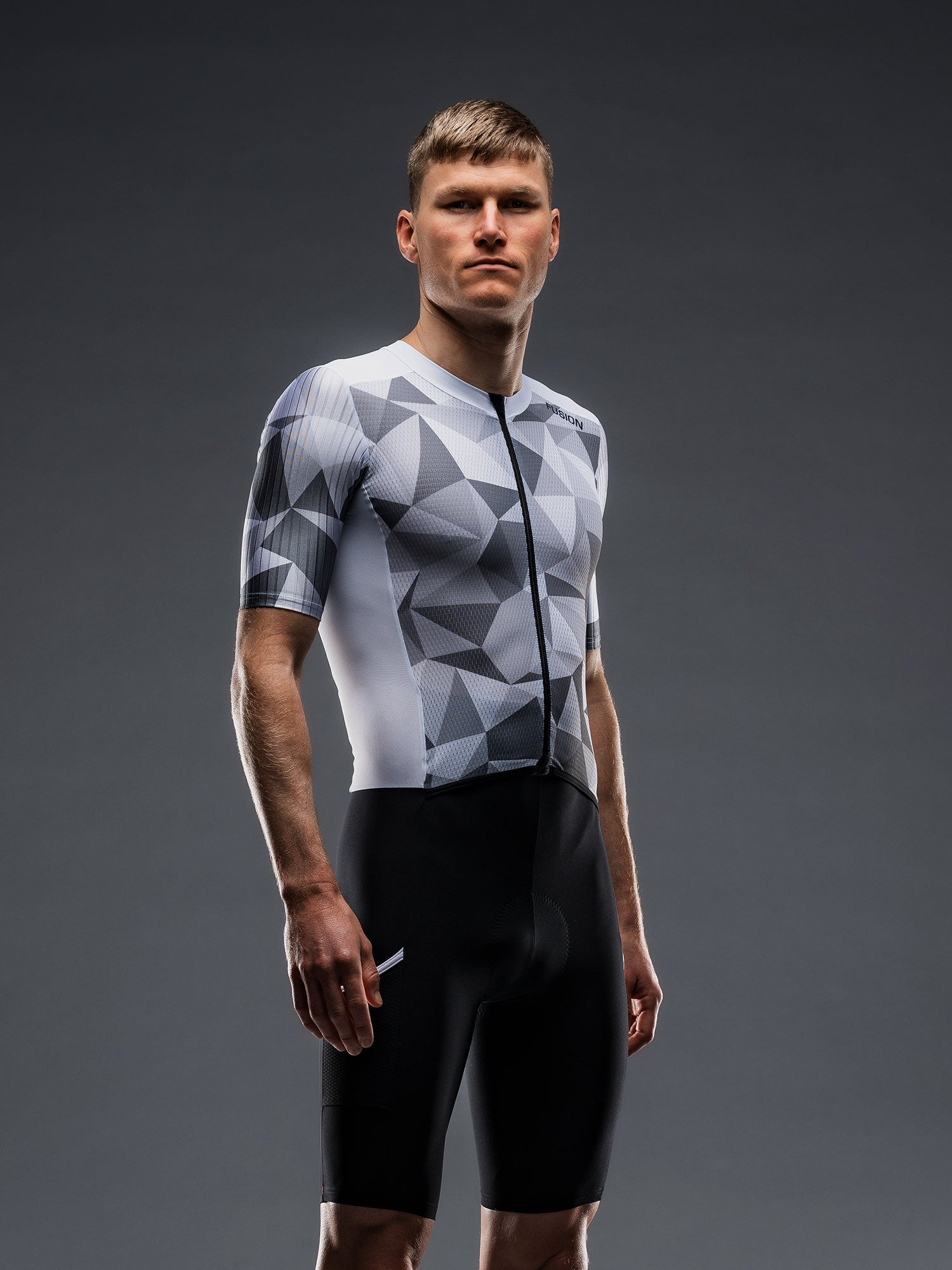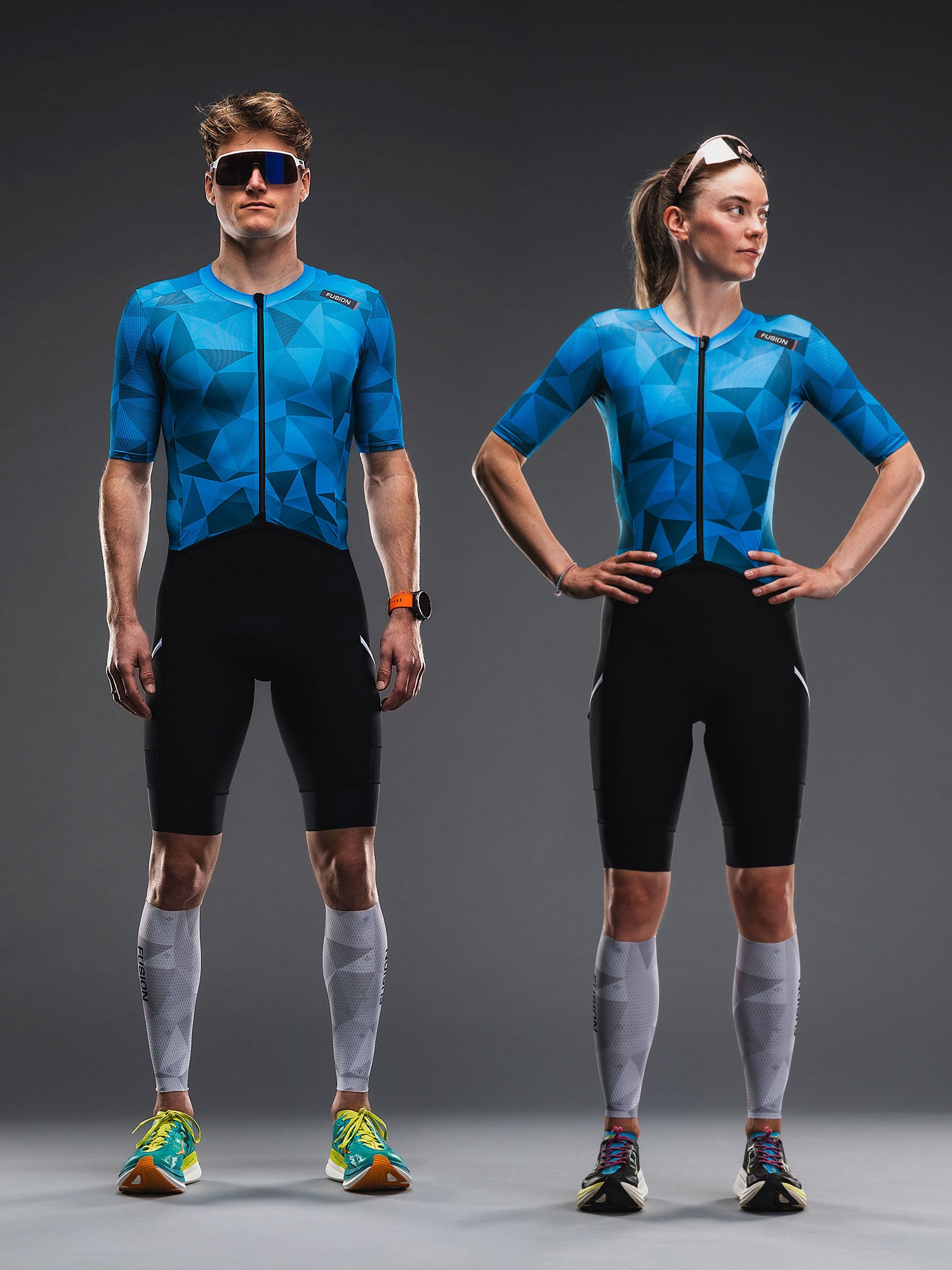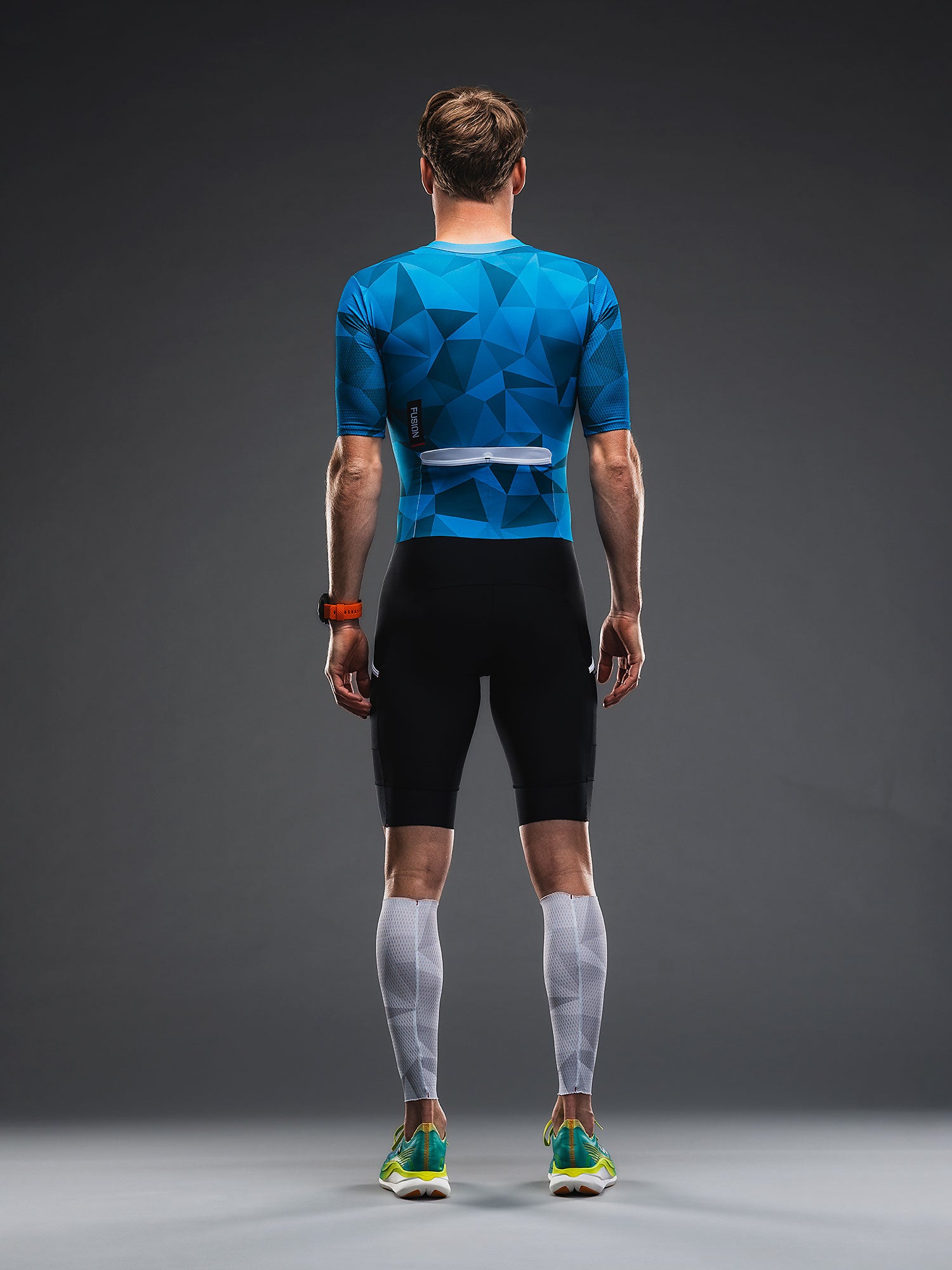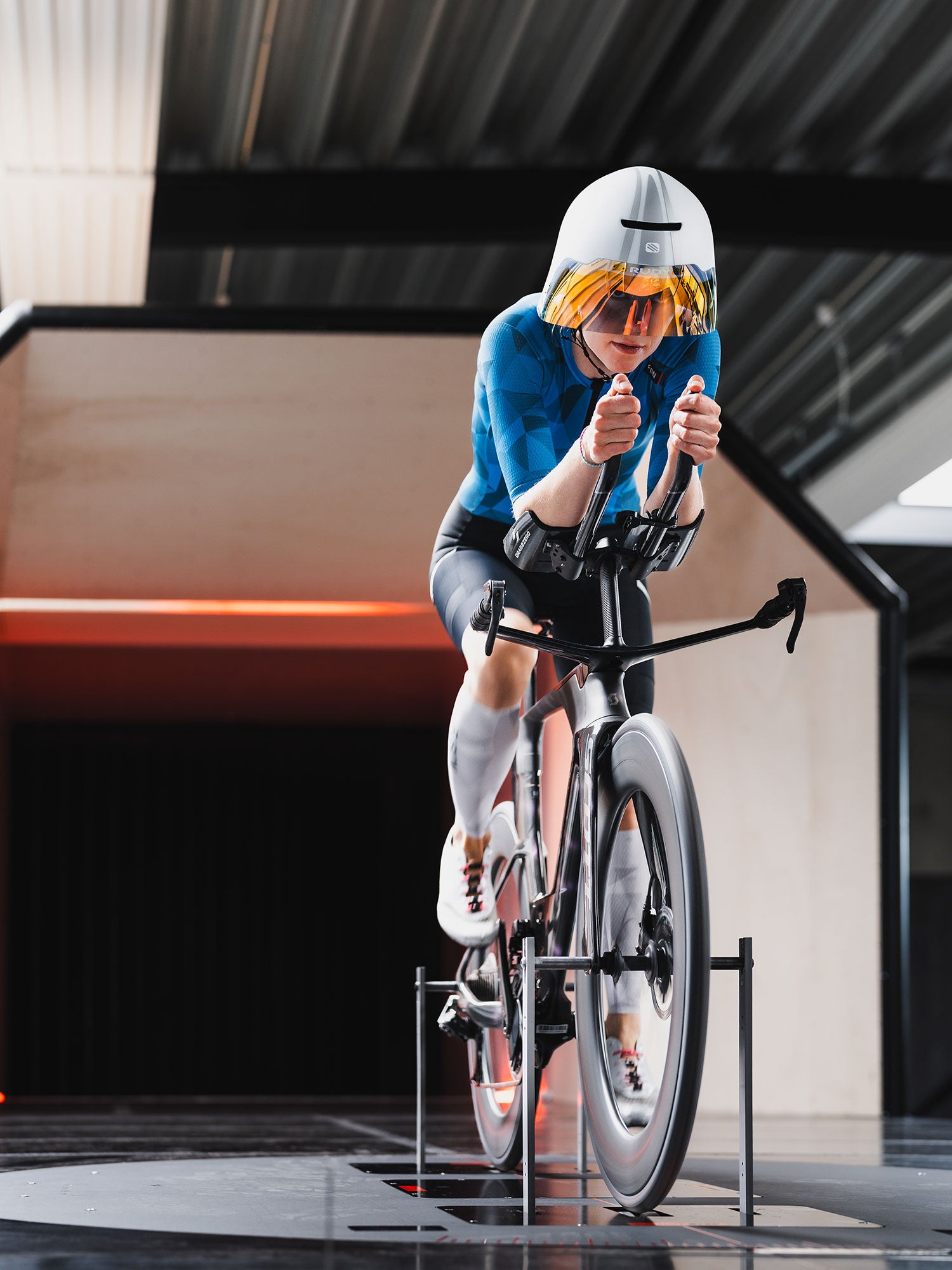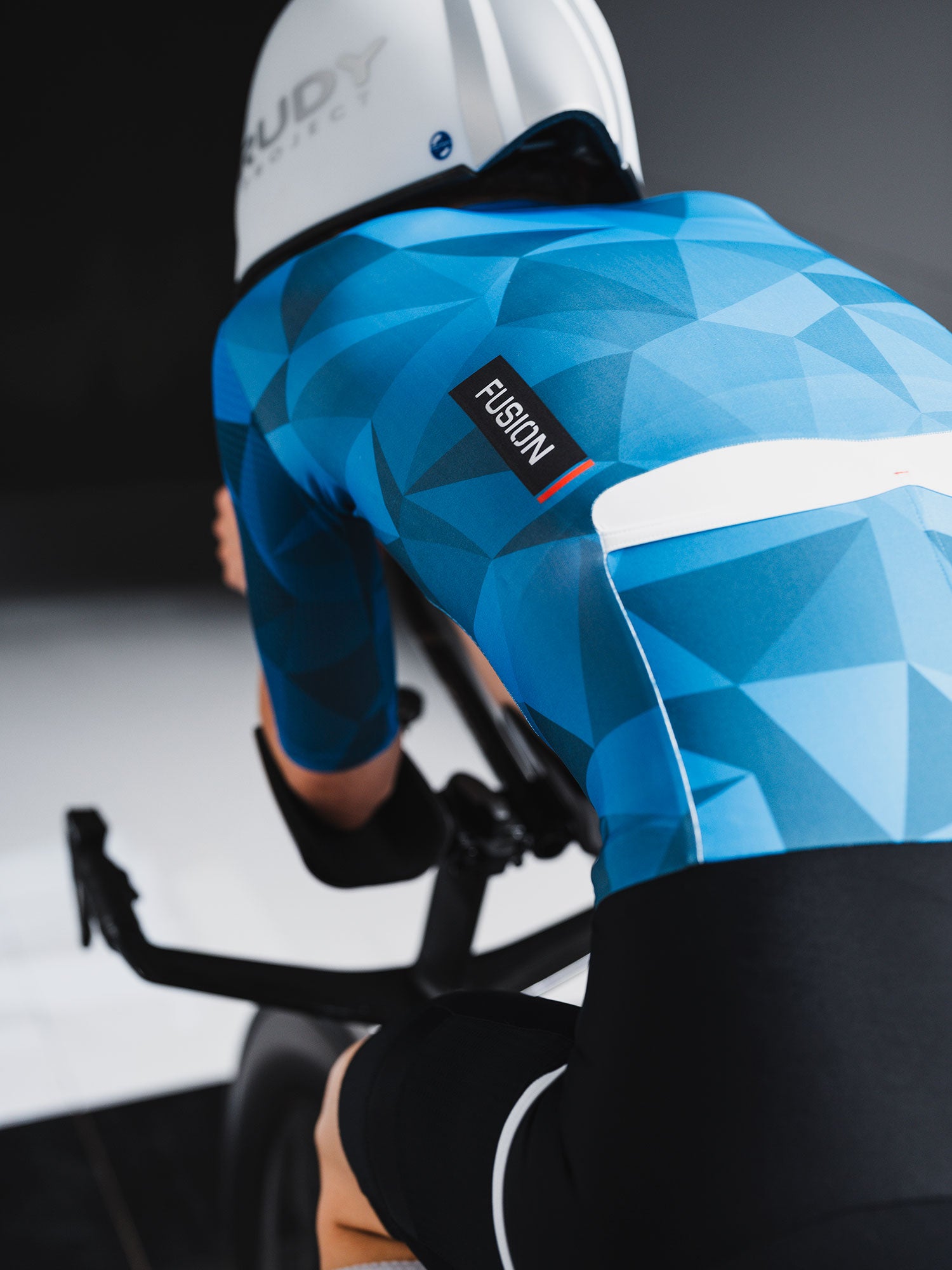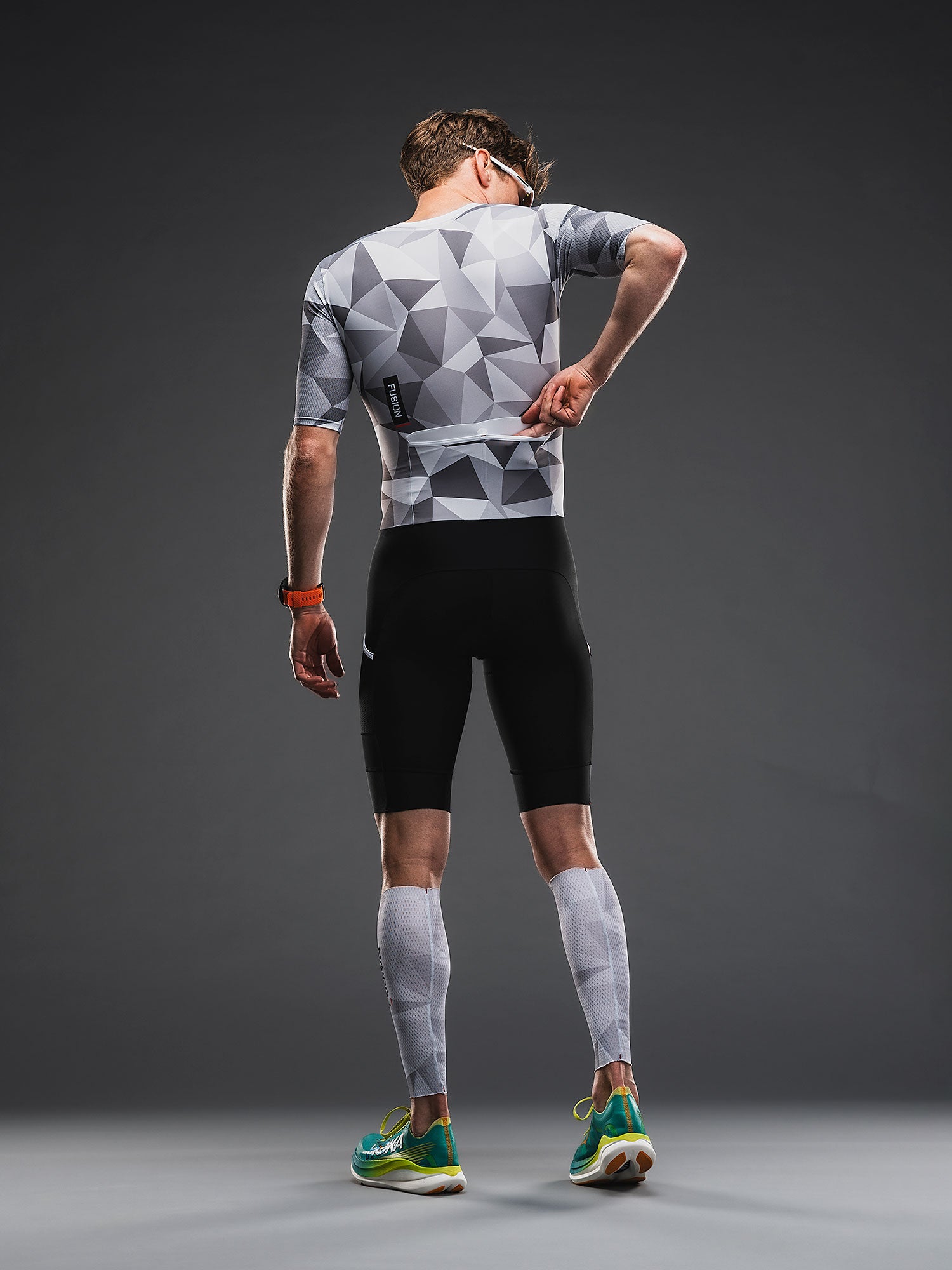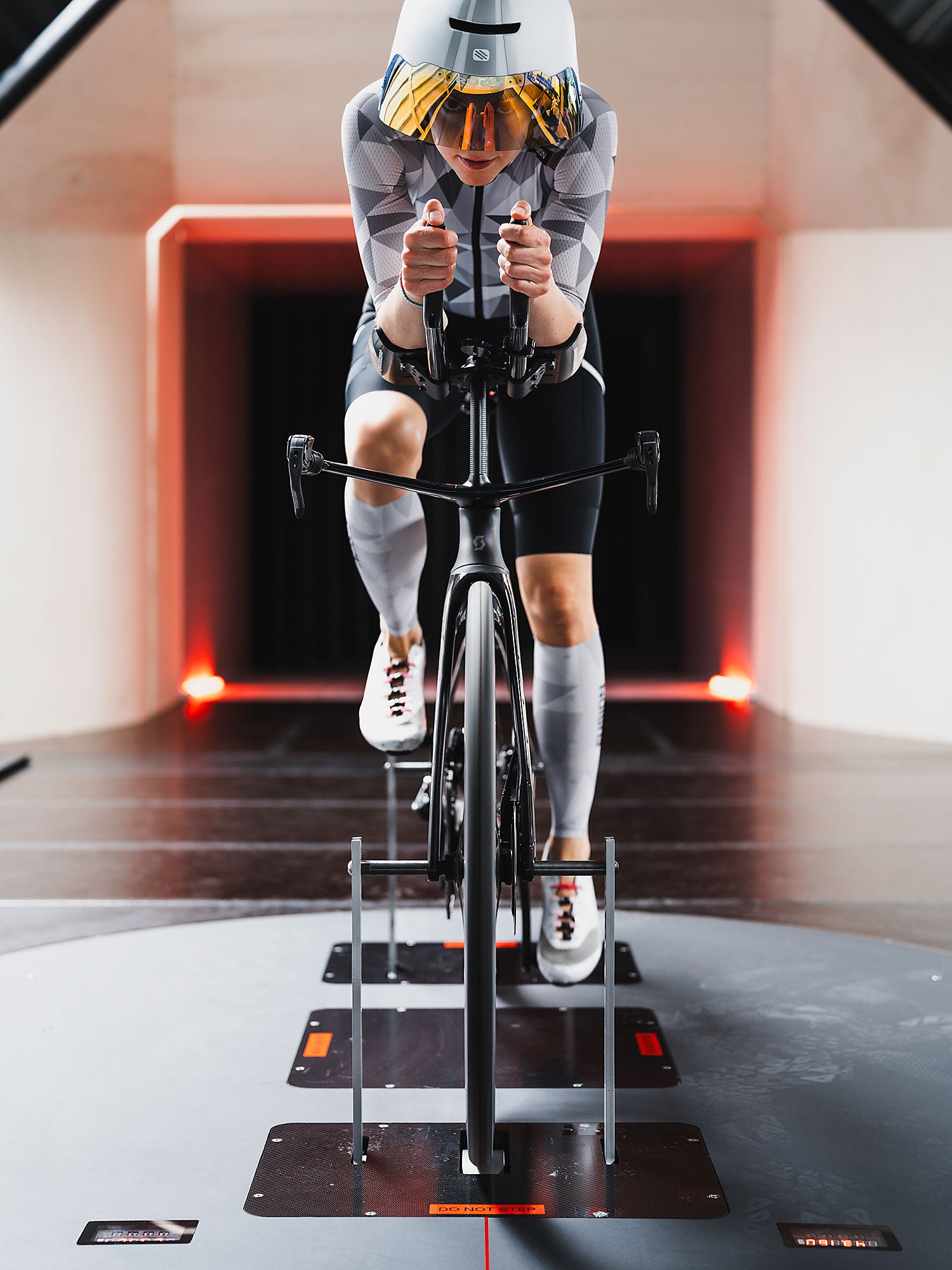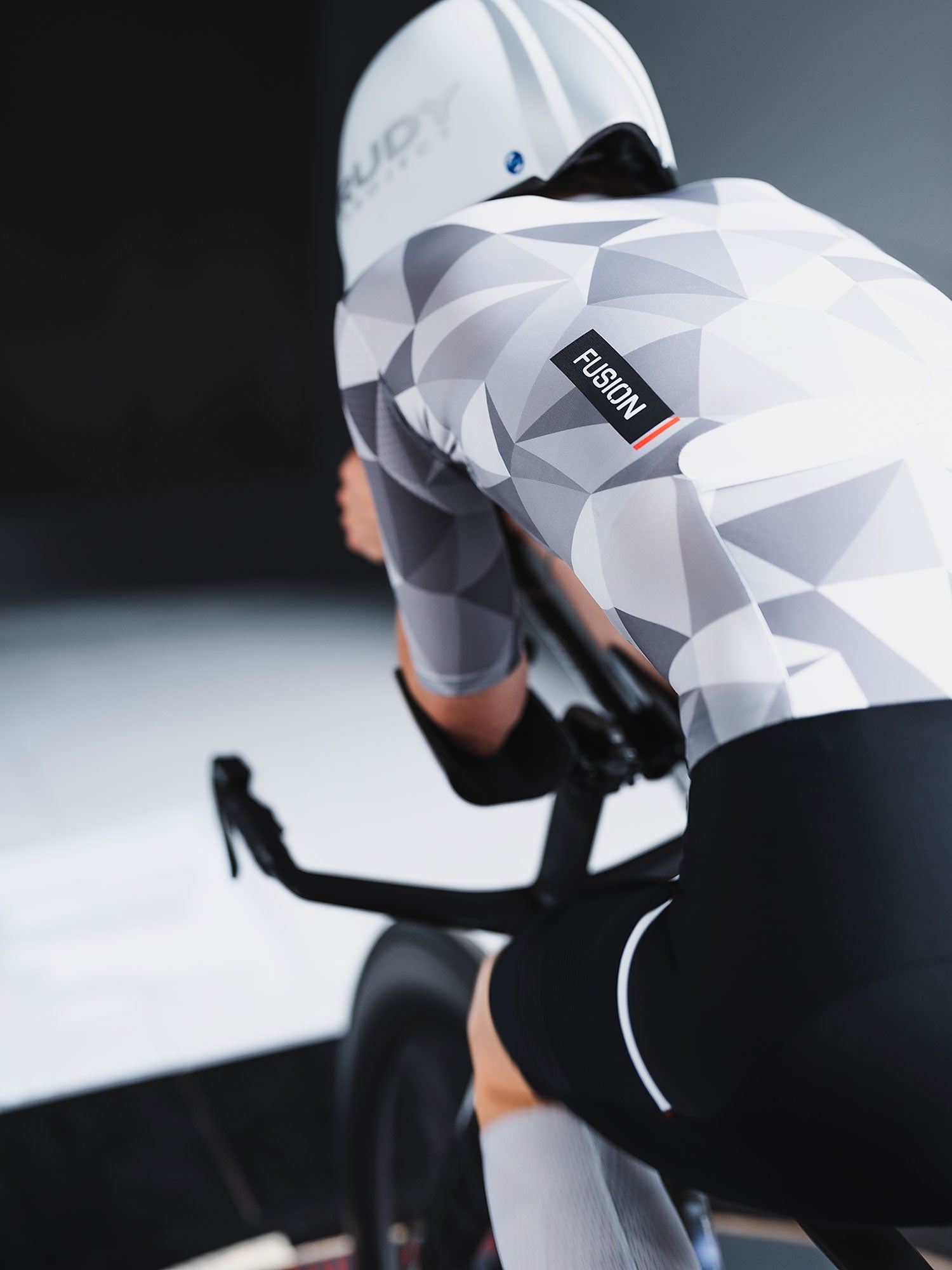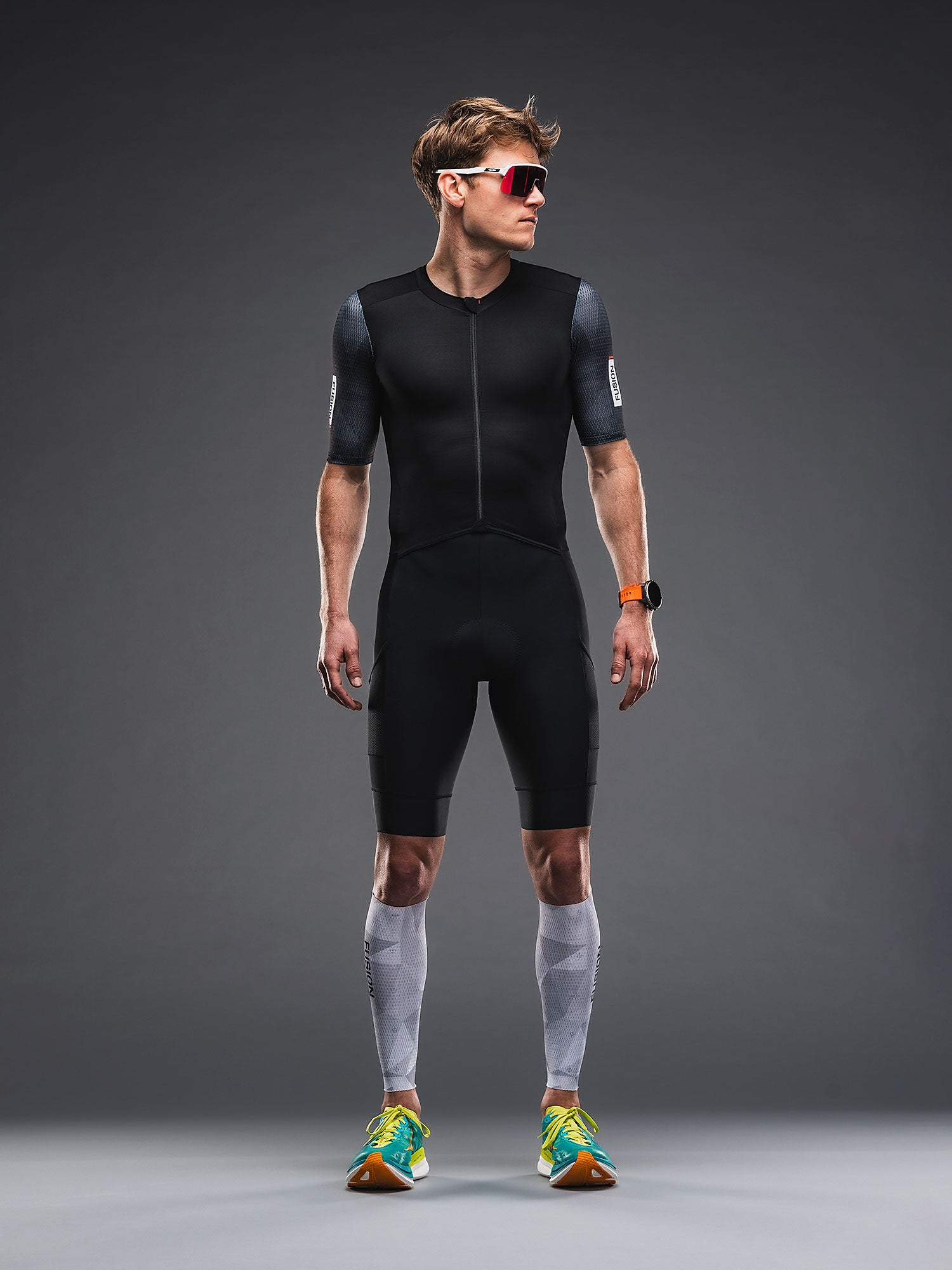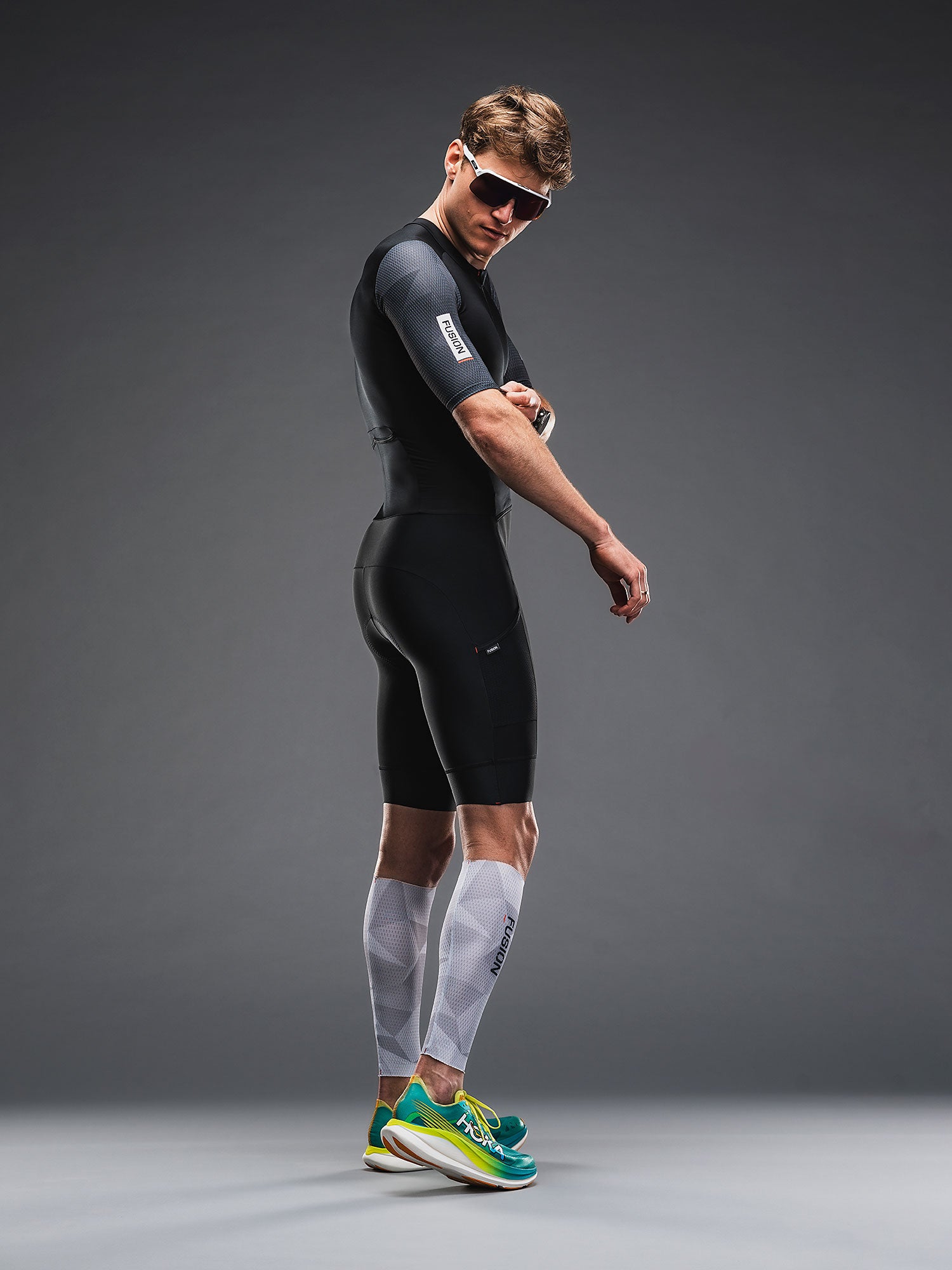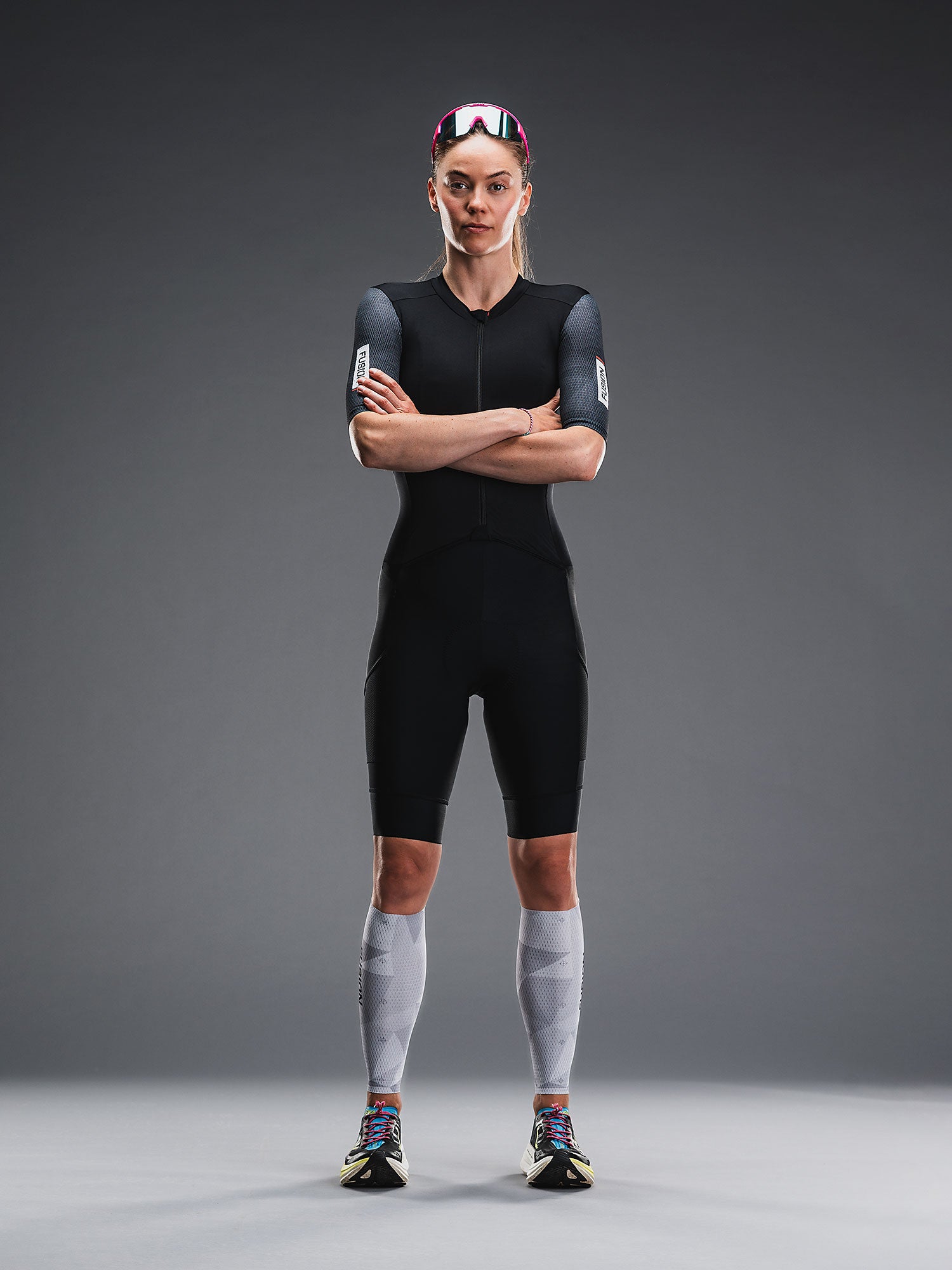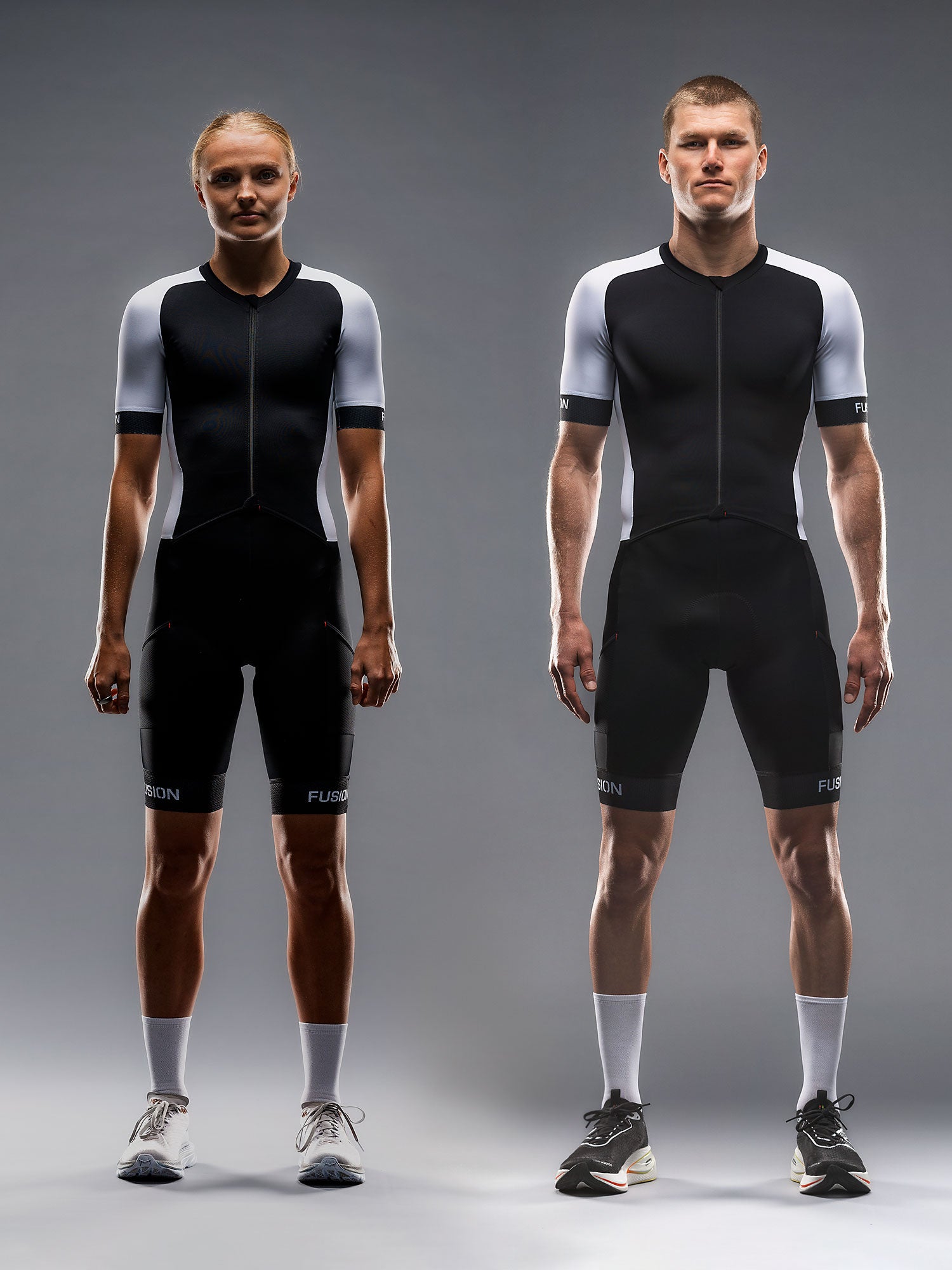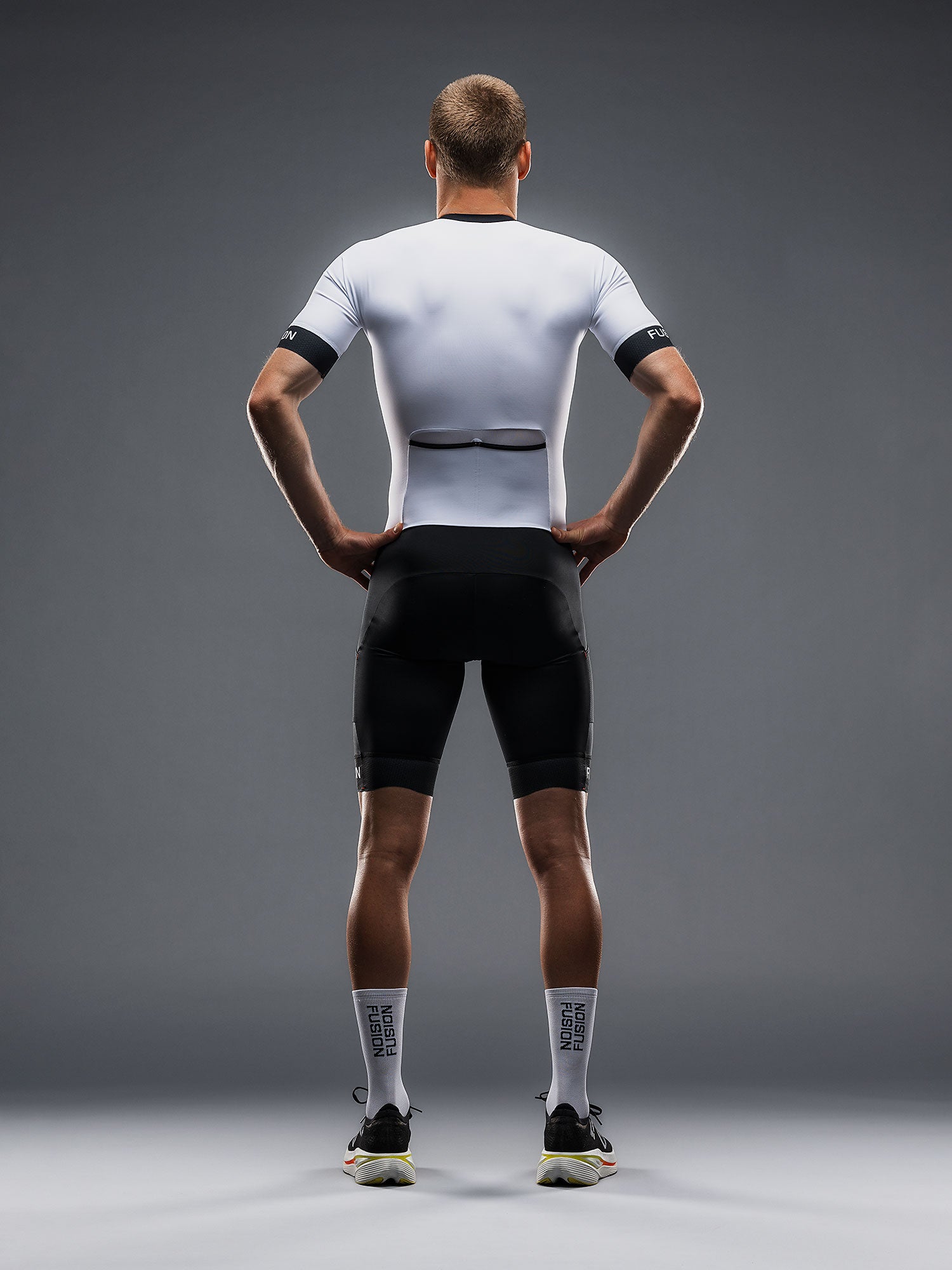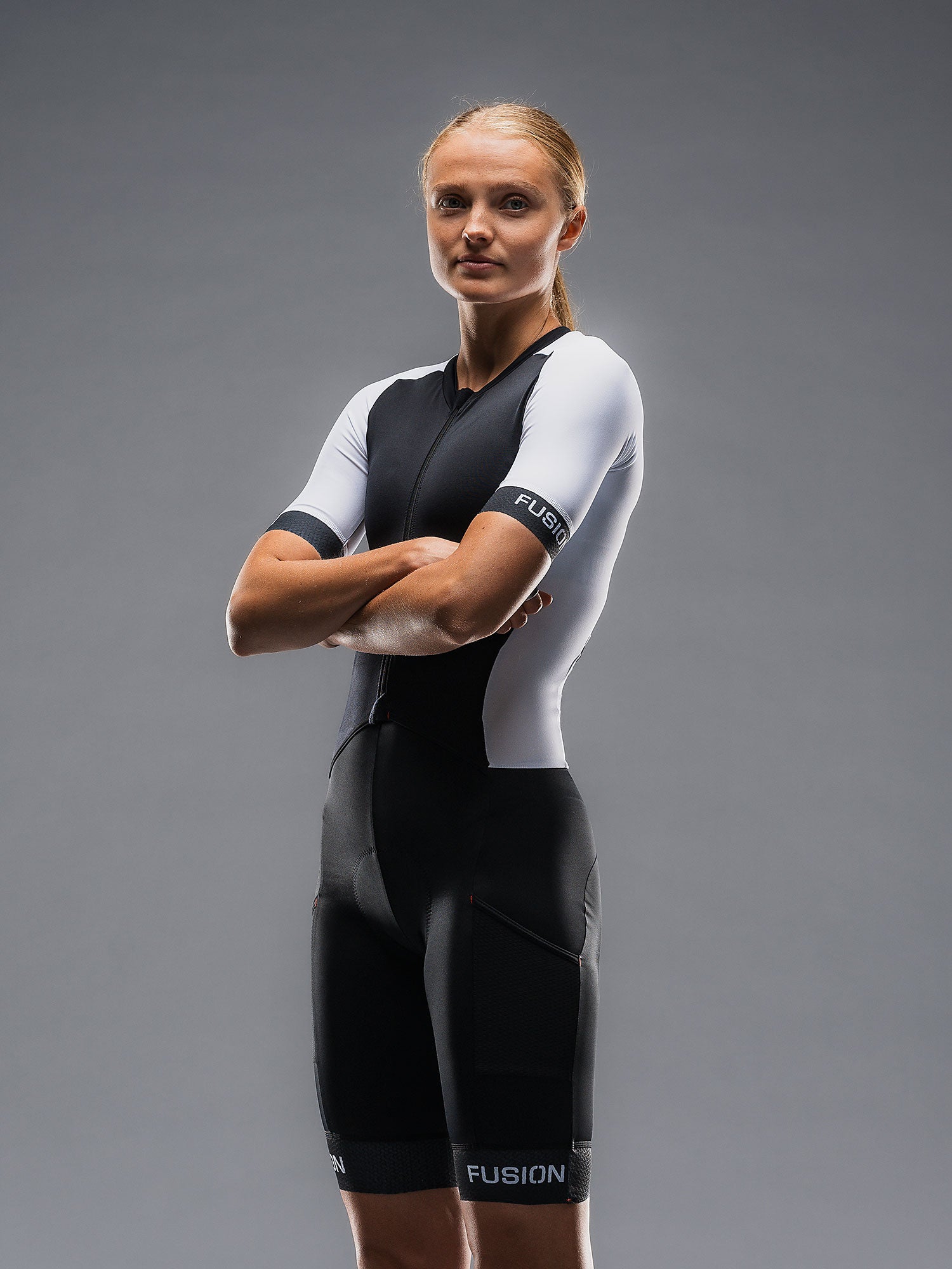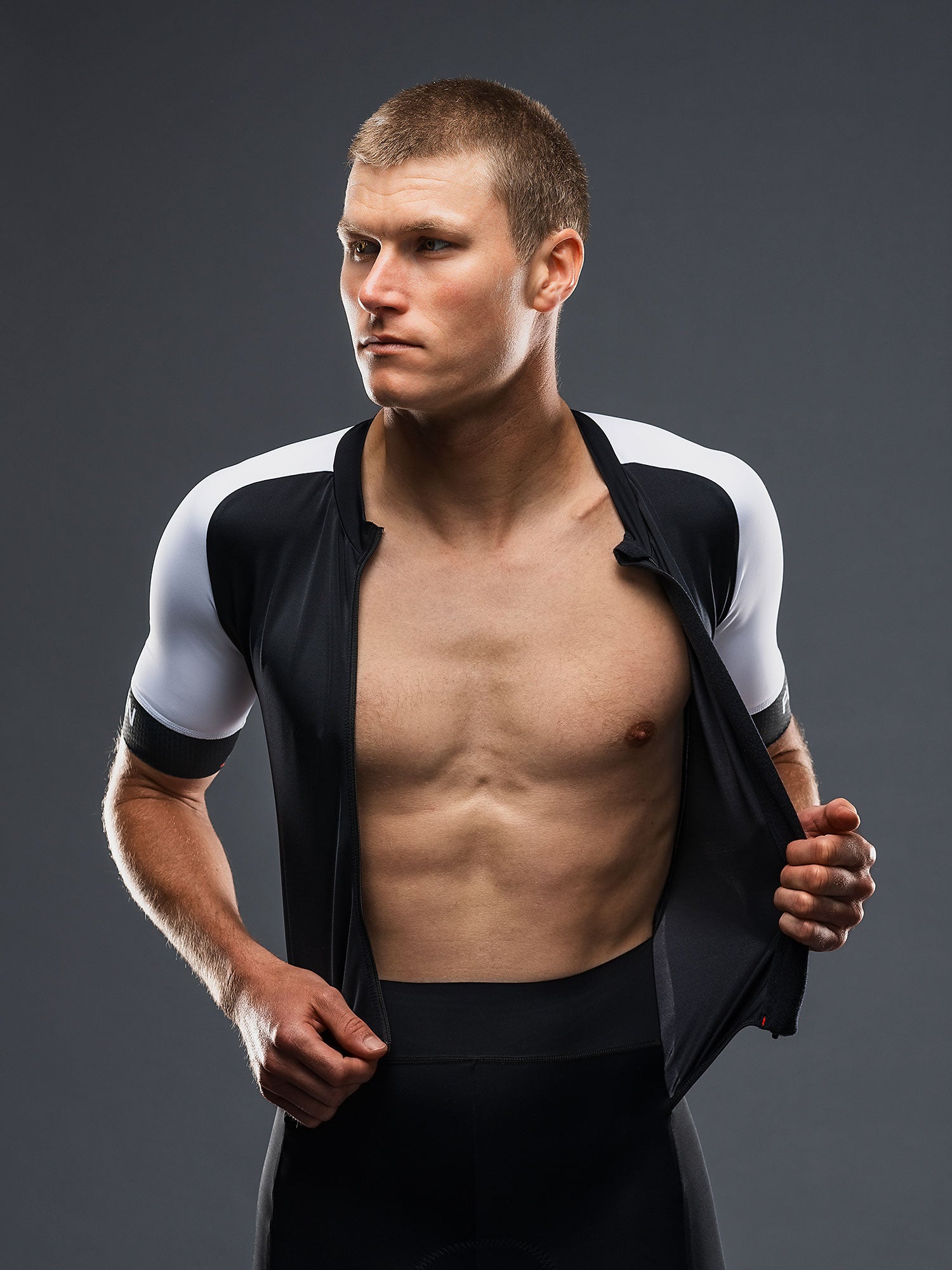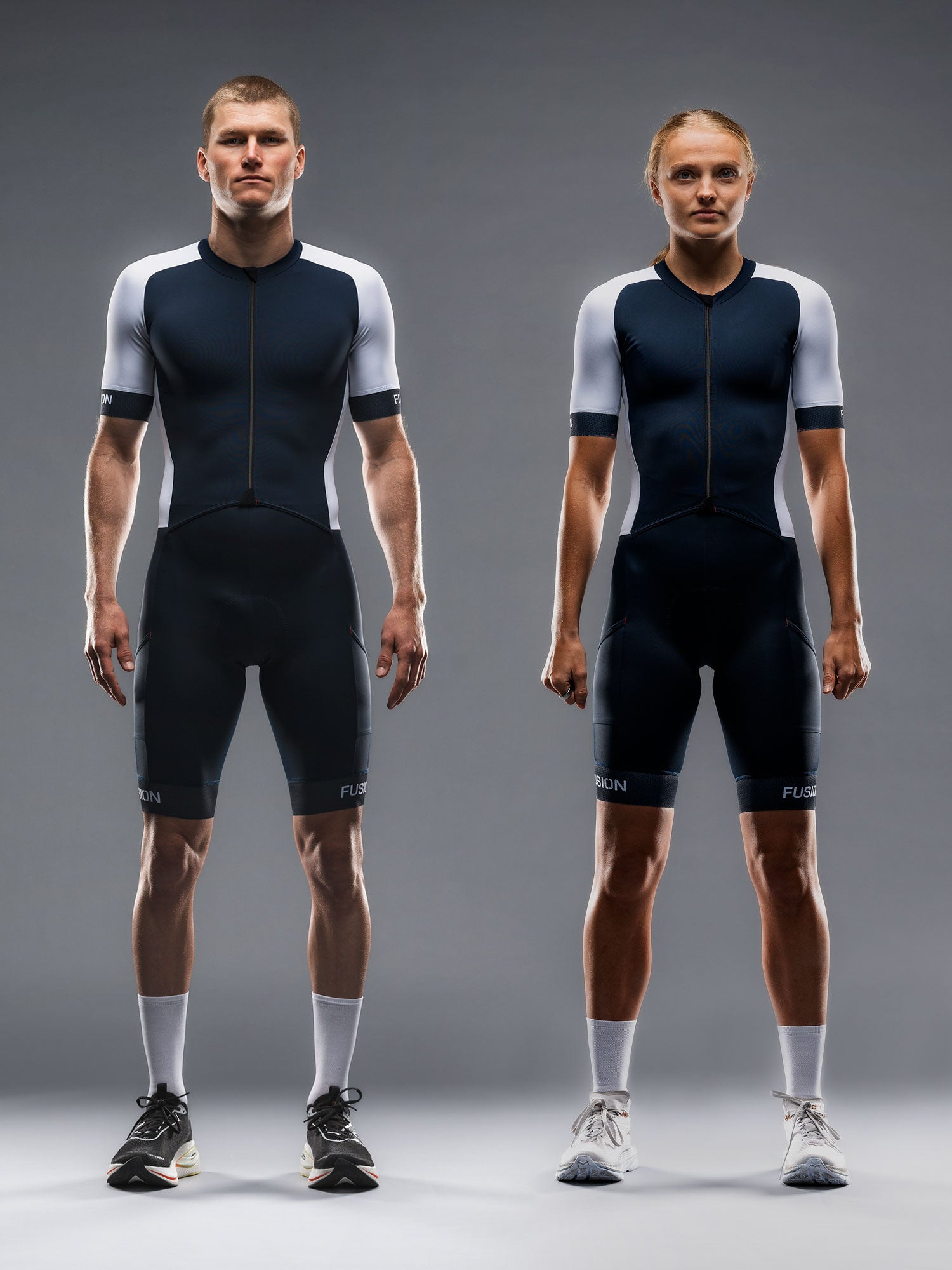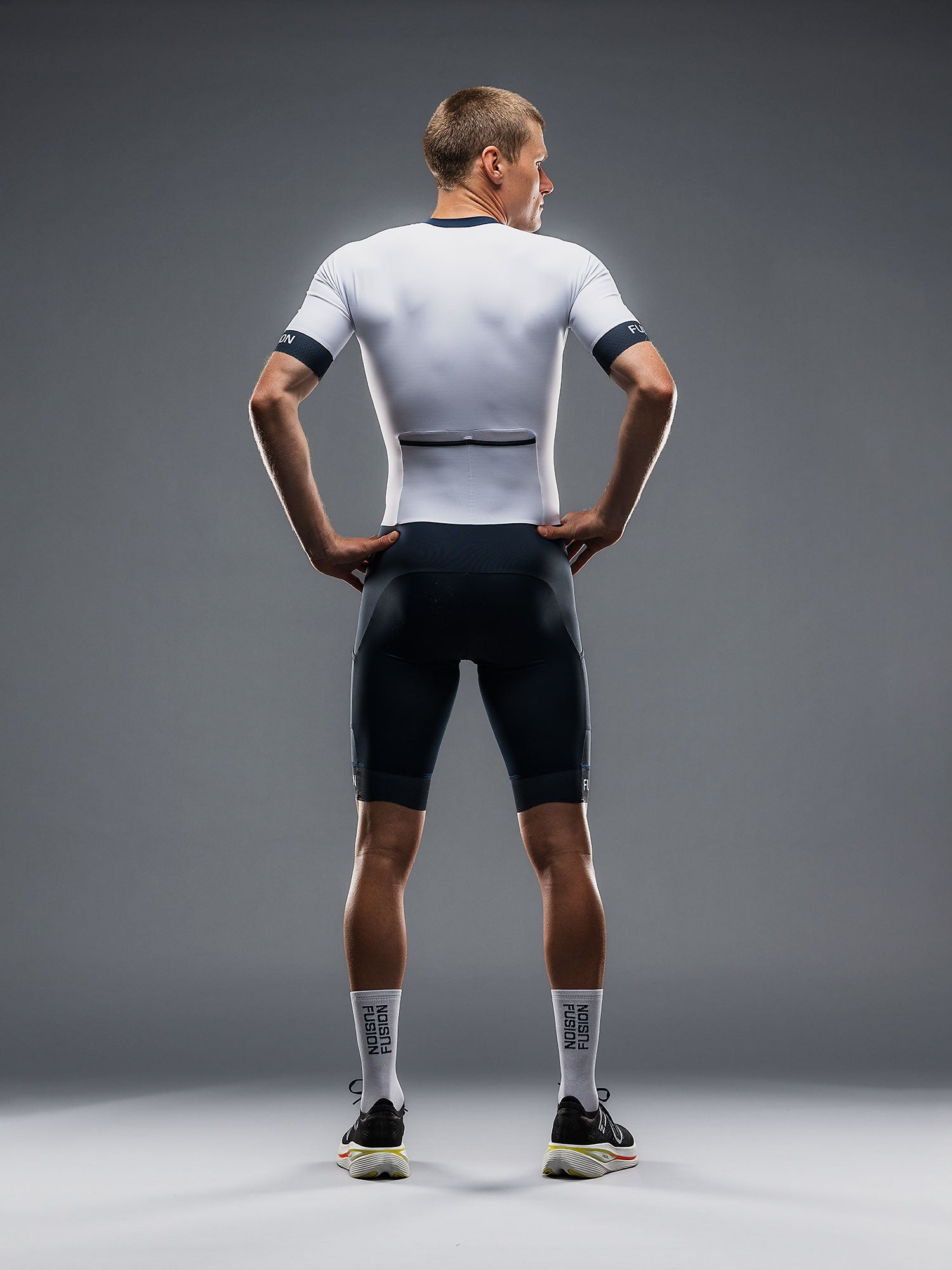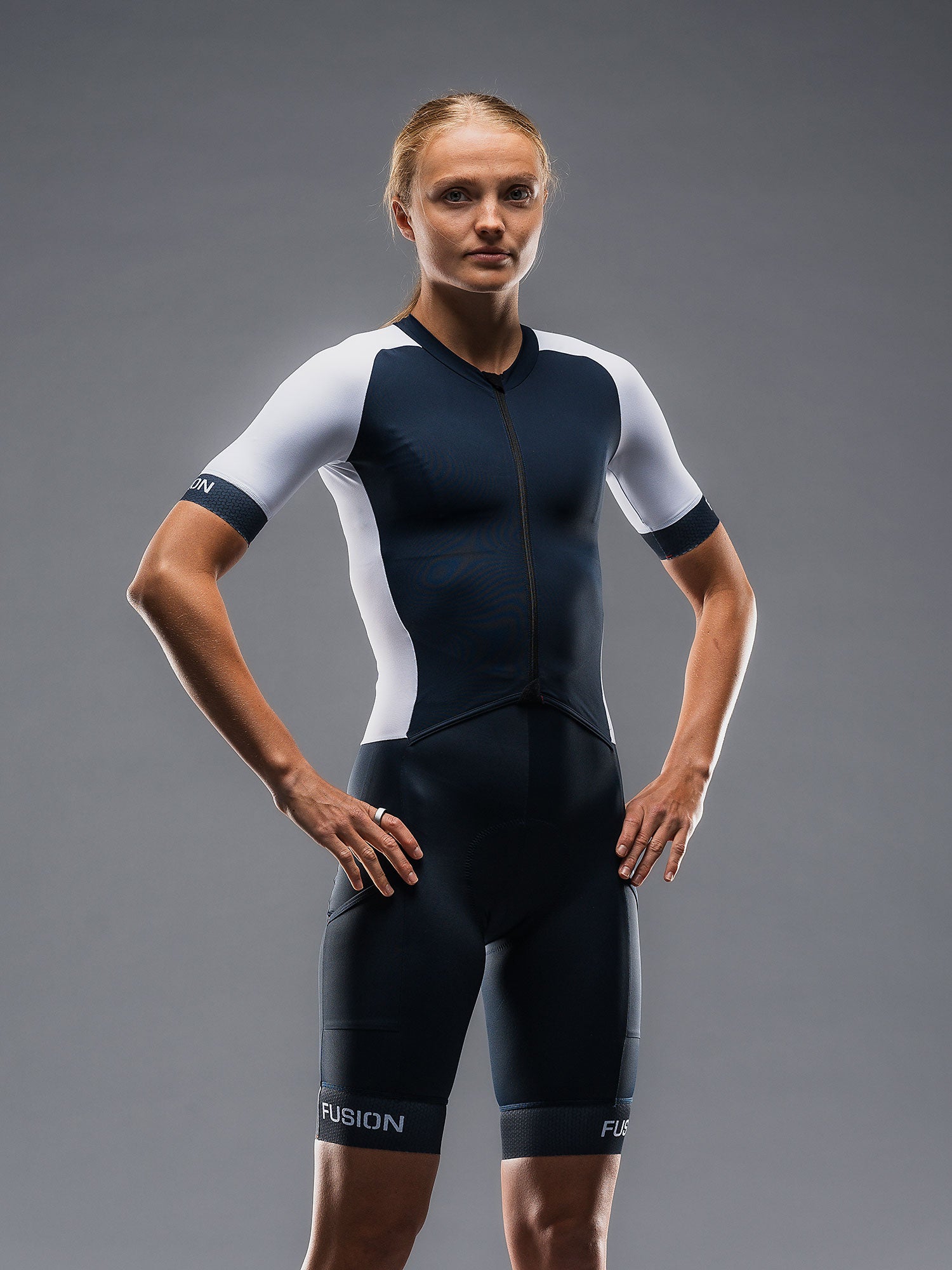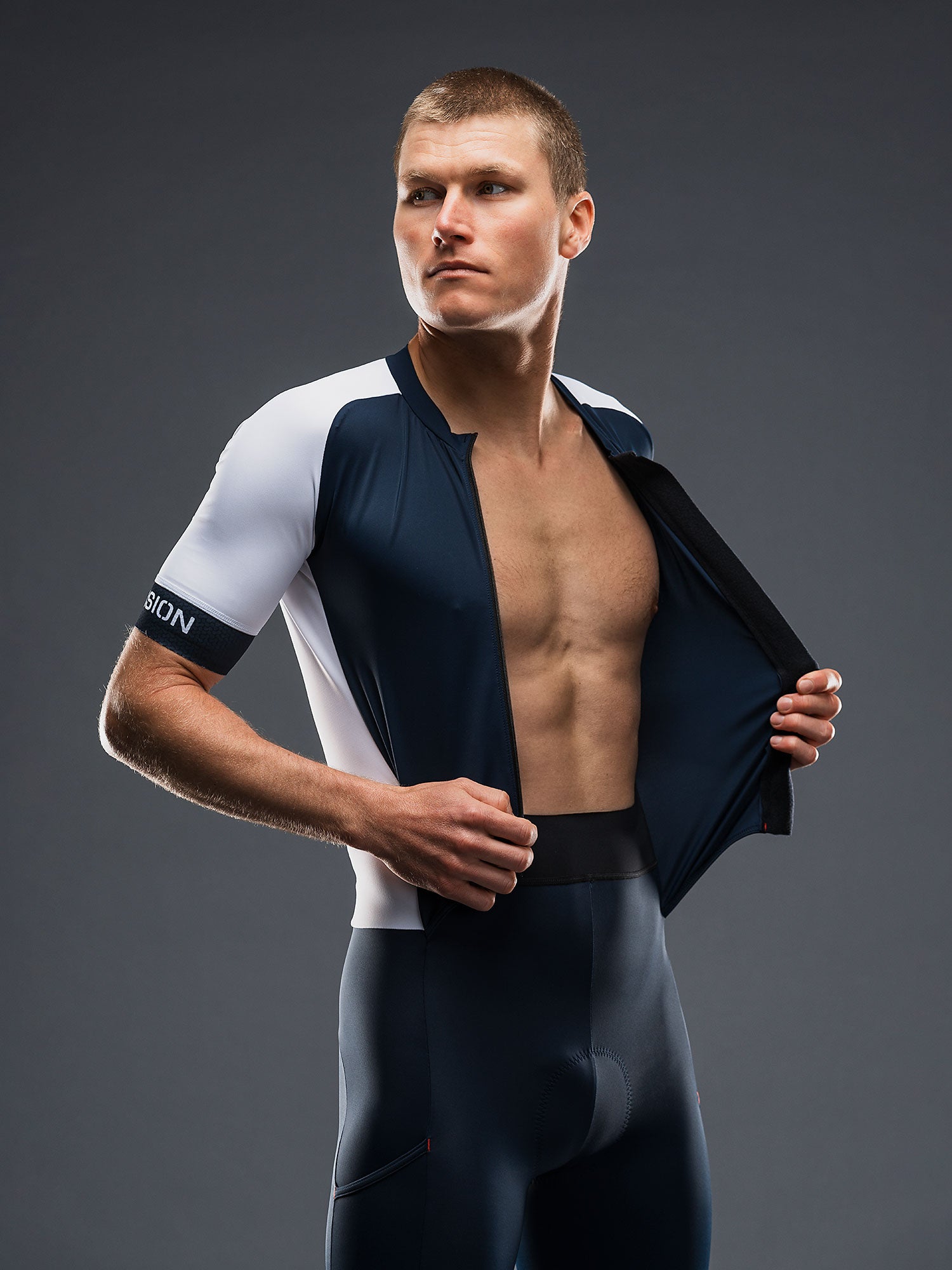Explore our different tri suits and discover your own TEMPO!
Behind the seams: A case study on the TEMPO! PRO Tri Suit
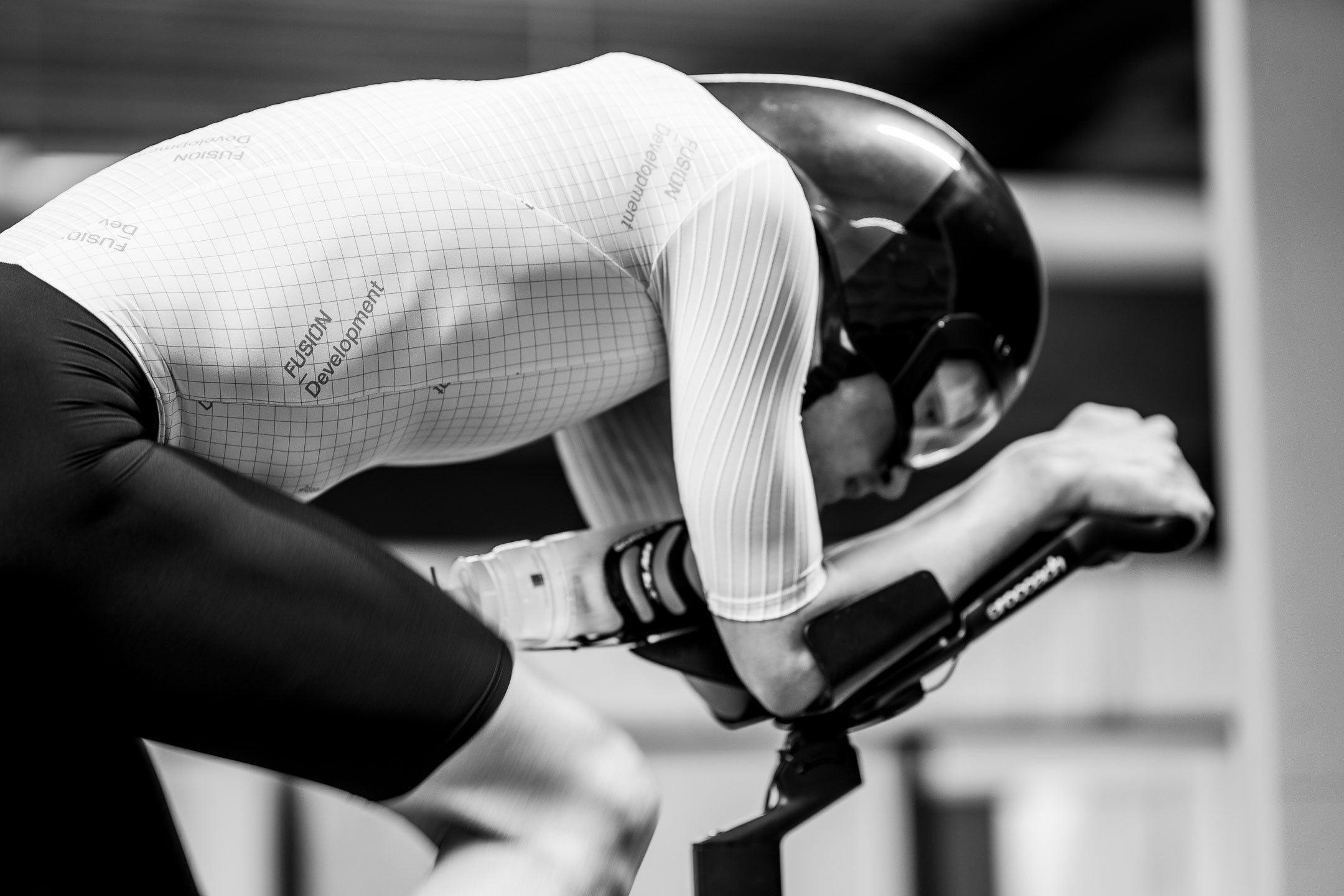
Author: Johannes Rom Dahl, Product Research & Development, FUSION.
When developing the new TEMPO! PRO Tri Suit, we set out to make a suit that performed at its very best in the speed ranges and riding positions we see from our top Pro athletes and competitive Age Groupers. Designed specifically for speeds above 40 km/h and modern, aggressive triathlon positions, the TEMPO! PRO Tri Suit has been validated through extensive testing on a wide variety of athletes — in our in-house TEMPO! Wind Tunnel, on indoor and outdoor velodromes, and through open road testing.
This article takes you inside the development process - not just how we engineered the suit to be aerodynamically efficient at pro-level speeds, but also why we believe in offering a variety of triathlon suits tailored to the performance profiles of different athletes.
The Fusion TEMPO! PRO Design and Development Process
Every new suit starts with identifying the intended use case and selecting fabrics based on a range of considerations such as intended discipline, most common speed range, anticipated position on the bike, requirements for thermoregulation etc. A tri suit has to perform for the entire event and properties like UV protection, moisture management and breathability all have to go into the consideration when developing a new suit.
The fabrics used for the TEMPO! PRO Tri Suit have been selected based on our extensive work with mapping fabric properties in our inhouse wind tunnel. Based on material properties from the fabric mapping we chose a number of most promising materials for each application and created prototype suits that allow us to explore how well the findings from the fabric mapping correlates with on-rider tests. We test all our prototypes at a wide range of speeds, yaw-angles and on a variety of test riders to ensure that our findings apply to a wide range of users and are not simply the result of a certain test protocol conducted on a certain athlete.
The new sleeve construction on the TEMPO! PRO Tri Suit is a direct result of our inhouse fabric mapping and testing. We identified the need for a sleeve material that would perform at a wider range of speeds than a uniform ripped sleeve and wanted to be able to tailor the speed bracket based on specific use case which resulted in the design now visible on the Temp Pro suit. When testing fabrics, we find that different fabrics perform at different speeds, and that some fabrics might perform very well at a specific wind speed but less so at lower/higher speeds. Through the unique construction of the sleeves of the TEMPO! PRO Tri Suit we have managed to extend the speed bracket at which the sleeves perform. The result of this is a suit that performs whether you are climbing, motoring on the flat or descending.
Similarly to how we developed the sleeve construction on the TEMPO! PRO Tri Suit, we considered a wide range of fabrics for the torso and leg material to ensure that we used the fastest fabrics available to us for each specific placement. The ripped back panel was chosen to help flow attachment. Again, this choice was made based on a number of prototype suits with various spacing, height and placements of the stripes, tested on a range of test riders in various positions, to ensure that the Tempo Pro suit would perform on a wide array of top athletes.
Before releasing a new suit we conduct outdoor aerodynamic tests and correlate these results with our findings from the Tempo wind tunnel. The feedback we get from our top athletes, with early access to the new innovations, also provide us with valuable input about how the suit performs when it matters in a race and we always take this feedback into account when developing the final product. In summary, the Tempo Pro suit is the result of many hours of R&D and we specifically worked to make a suit to be as fast as possible for the top Pro and AG athletes of the sport. The TEMPO! PRO Tri Suit is made to meet the demands of the top competitors, and has been optimised to keep athletes ahead of the competition in a world of faster and faster bike split times.
Choosing the right suit: A case study
We believe in individuality, and we know that there is one lid for every pot. This is why we currently offer four different tri suits in our range:
- TEMPO! PRO Tri Suit
- TEMPO! ONE Tri Suit ( Mens / Womens )
- TEMPO! TWO Tri Suit
- TEMPO! THREE Tri Suit (entry level)
Each suit has been developed to fit the needs of a specific user group whether they are taking part in their first triathlon competition or racing for the win. To show how our different suits have been optimised around the intended user, we present a case study from our inhouse testing.
Eric is a competitive Age Group Triathlete, and we recently conducted a day of testing with Eric as a part of the final validation of our Tempo Pro suit. As a part of the test we conducted a speed sweep, meaning a test where different configurations are tested at a range of speeds, on Eric in the four different Tempo triathlon suits. This specific test is one we have done on a number of occasions to ensure that our products perform at their intended use case but for simplicity we will take a closer look at this specific case study to show the difference between the Tempo suits.
The four suits were tested on Eric at 9, 10, 11, 12 and 13 m/s and at a steady 4 degree yaw-angle. The tests were conducted with Eric on his own Tri bike in a familiar position to ensure that he would maintain a consistent position. We monitor the position of all test subjects closely during our test runs to ensure that they stay consistent and to make sure that we register any inconsistencies and repeat the impacted test runs. In our R&D process we consider a wide range of yaw angles as well to ensure that our products function in any wind conditions but for this case study we tested Eric at a steady yaw angle that we found to provide a good compromise between the most commonly observed yaw angles at the tested speed range.
The table presents the measured drag in Watt for each of the four suits at the five speeds included in the speed sweep. For convenience the speed has been converted to km/h in the table. The five test speeds converts to 32,4 km/h, 36 km/h, 39,6 km/h, 43,2 km/h and 46,8 km/h:
A few things to consider when assessing this type of test data: As drag is proportional to velocity squared, a relatively small increase in speed induces a quite considerable increase in drag as is clear from the test data. However, already at 32,4 km/h, drag resistance makes for the majority of resistance that the athlete has to overcome on the bike. Another thing to keep in mind is, since the athlete competing at a relatively lower speed will be on the bike for longer, a drag reduction resulting in a saving of X watts will actually have a bigger impact on the finishing time of that athlete compared to a faster athlete observing the same drag reduction.
The test conducted with Eric shows how different suits perform well at different speeds, which is exactly as intended. This is a specific case for a specific athlete, but it shows how we considered performance at a variety of race speeds when developing our different tri suits.
The test shows how, at lower speeds (32,4 km/h), the Tempo Two suit performs very much on par with the more high performance oriented suits. Adding to this, the Tempo Two suit has additional energy storage compared to the Tempo One and Tempo Pro suits.
At all speeds tested, the Tempo One suit performs very competitively on Eric, even outperforming the Tempo Pro suit at 36 km/h. The Tempo One suit makes for a versatile suit, refined for years, that continues to perform very well.
The Tempo Pro suit shines at pro speeds as intended. Tested on Eric, the Tempo Pro suit is actually outperformed at the lower test velocities, but as the speed goes up, the Tempo Pro suit performs increasingly well. At 43,2 and 46,8 km/h, the Tempo Pro suit provides a significant performance gain on Eric.
Finally the Tempo Three suit: this suit is mainly designed as a great entry level option and while it might not stand out at any speed the suit still performs consistently across the speed sweep. The Tempo Three suit might not be the fastest option but still performs relatively well across the board.
Summarising
The case study conducted on Eric, the competitive Age Group Triathlete, highlights the need to consider individual use case scenarios when choosing race equipment. Depending on the specific use case, any three of the tested tri suits could be the best option for Eric, meaning that the ideal suit for Eric could come down to race distance and race conditions.
Ultimately, our wind tunnel testing yields different results for different riders, highlighting the individual nature of aerodynamics for cyclists and with this case study we do not want to insinuate that this particular pattern would be observed on all triathletes.
However, based on extensive testing we have created a range of tri suits to fit the needs of a broad range of athletes, and validation tests like the one conducted on Eric gives us confidence in the merit of our product range and in our ability to guide users to choose the right suit for their needs.
Discover the TEMPO! Tri Suits
